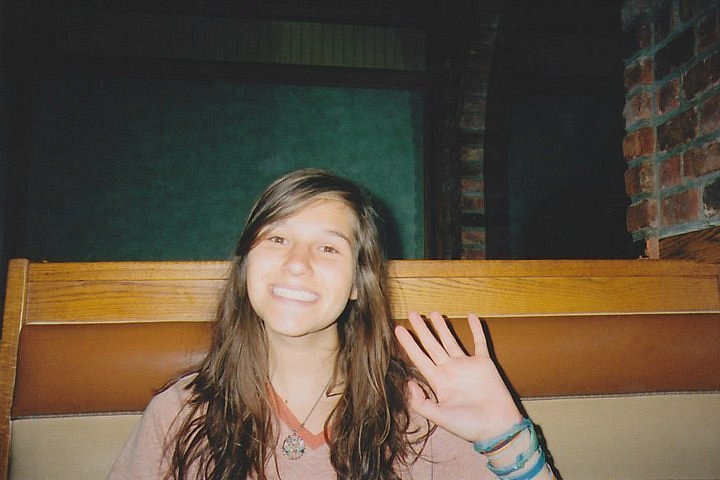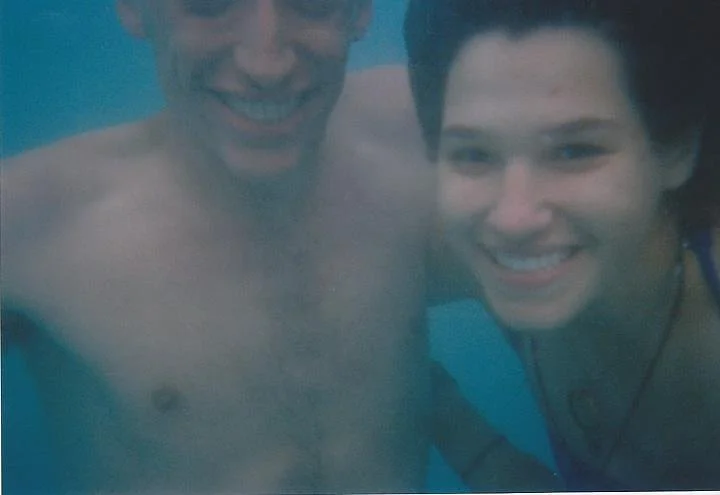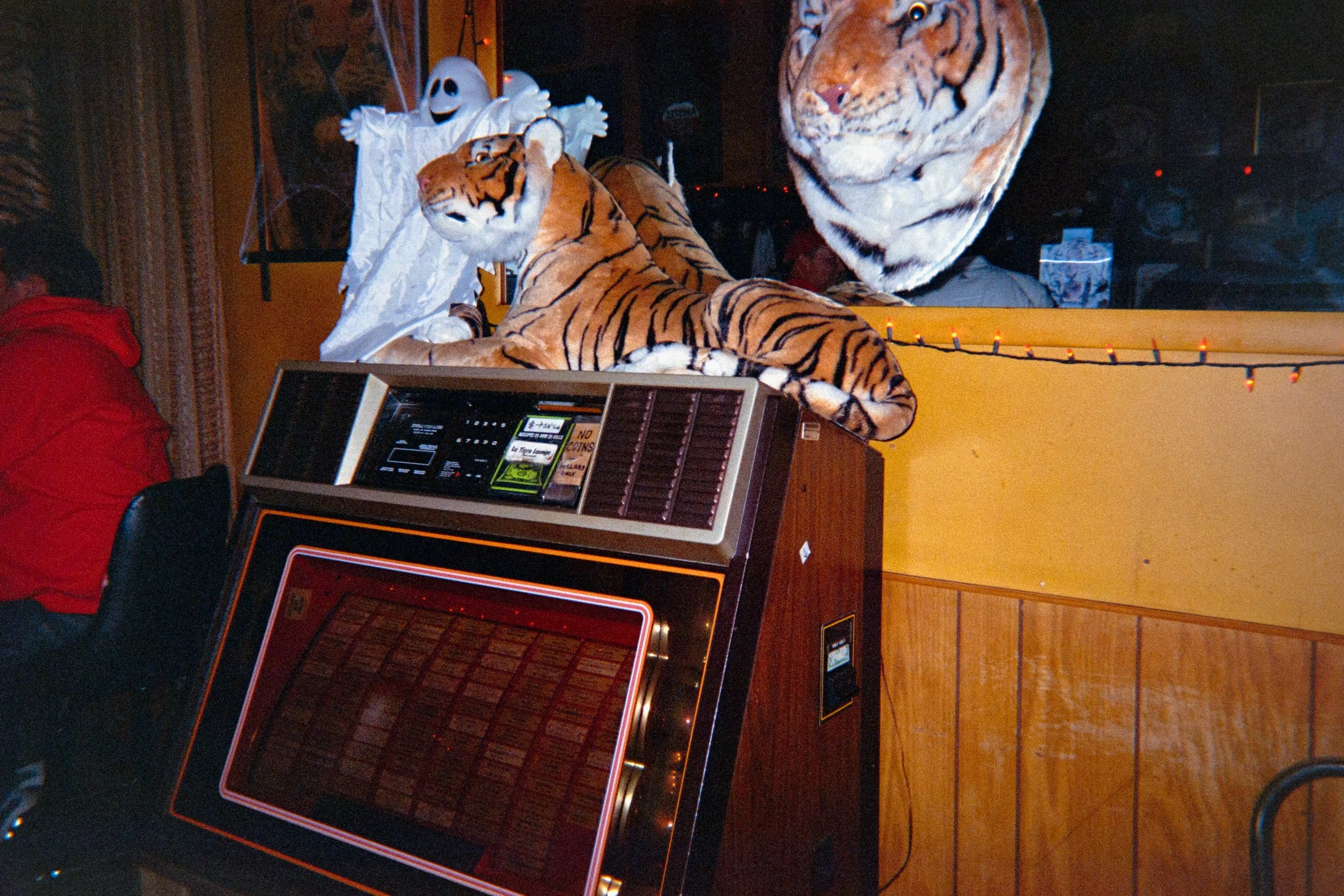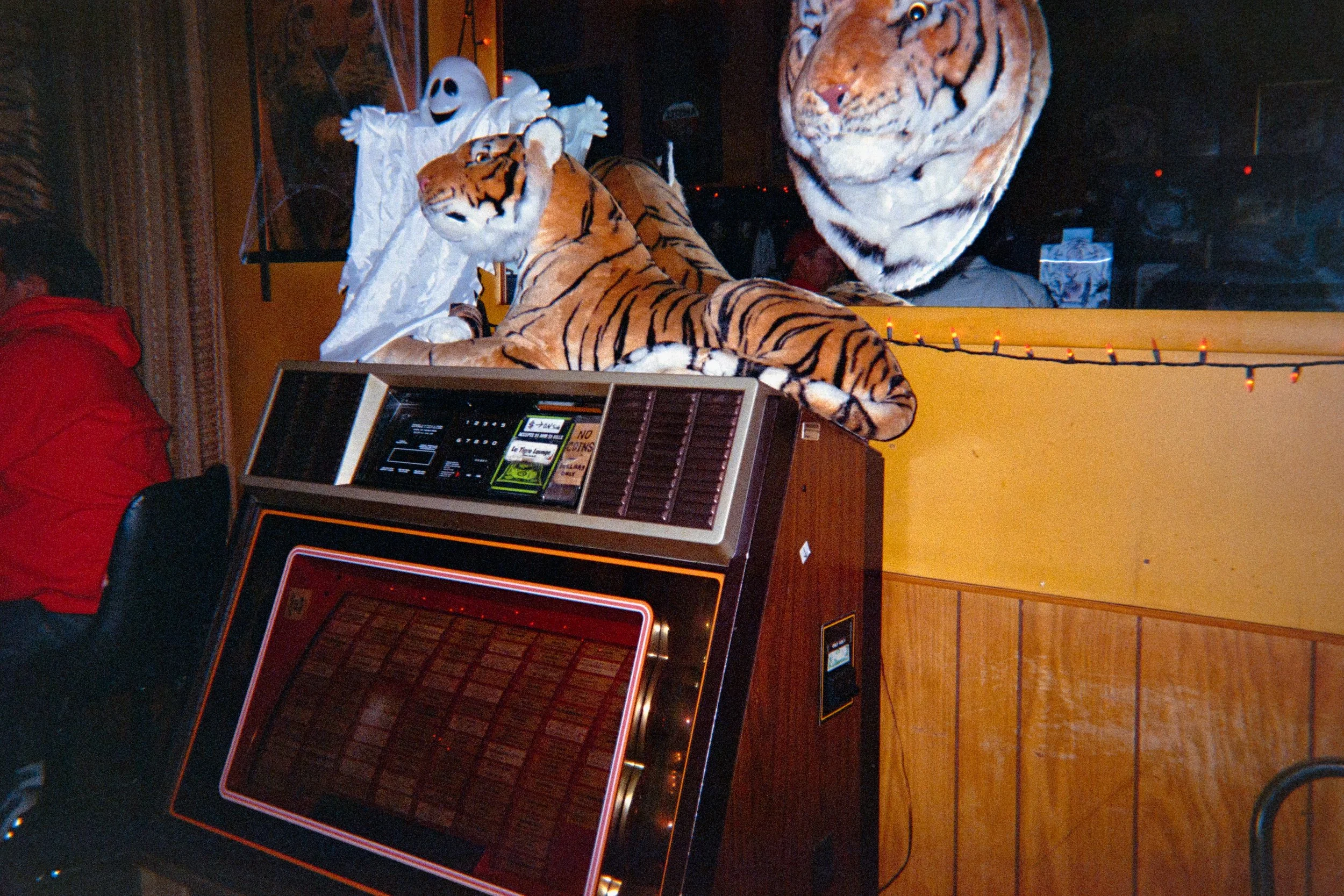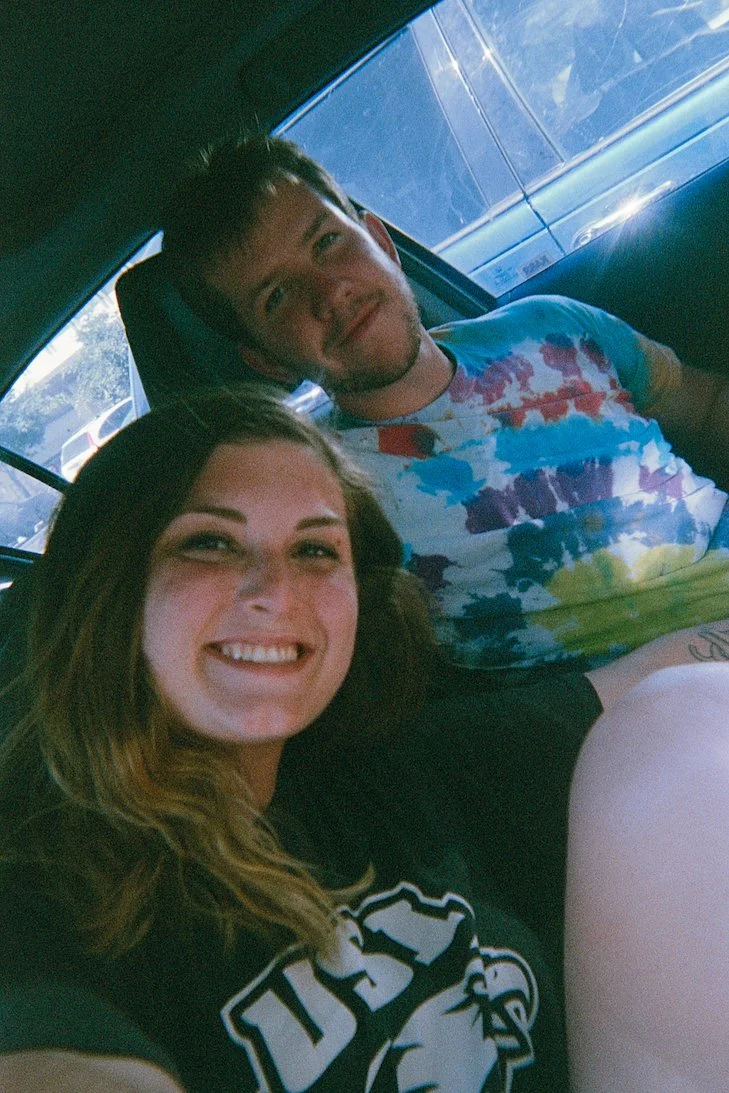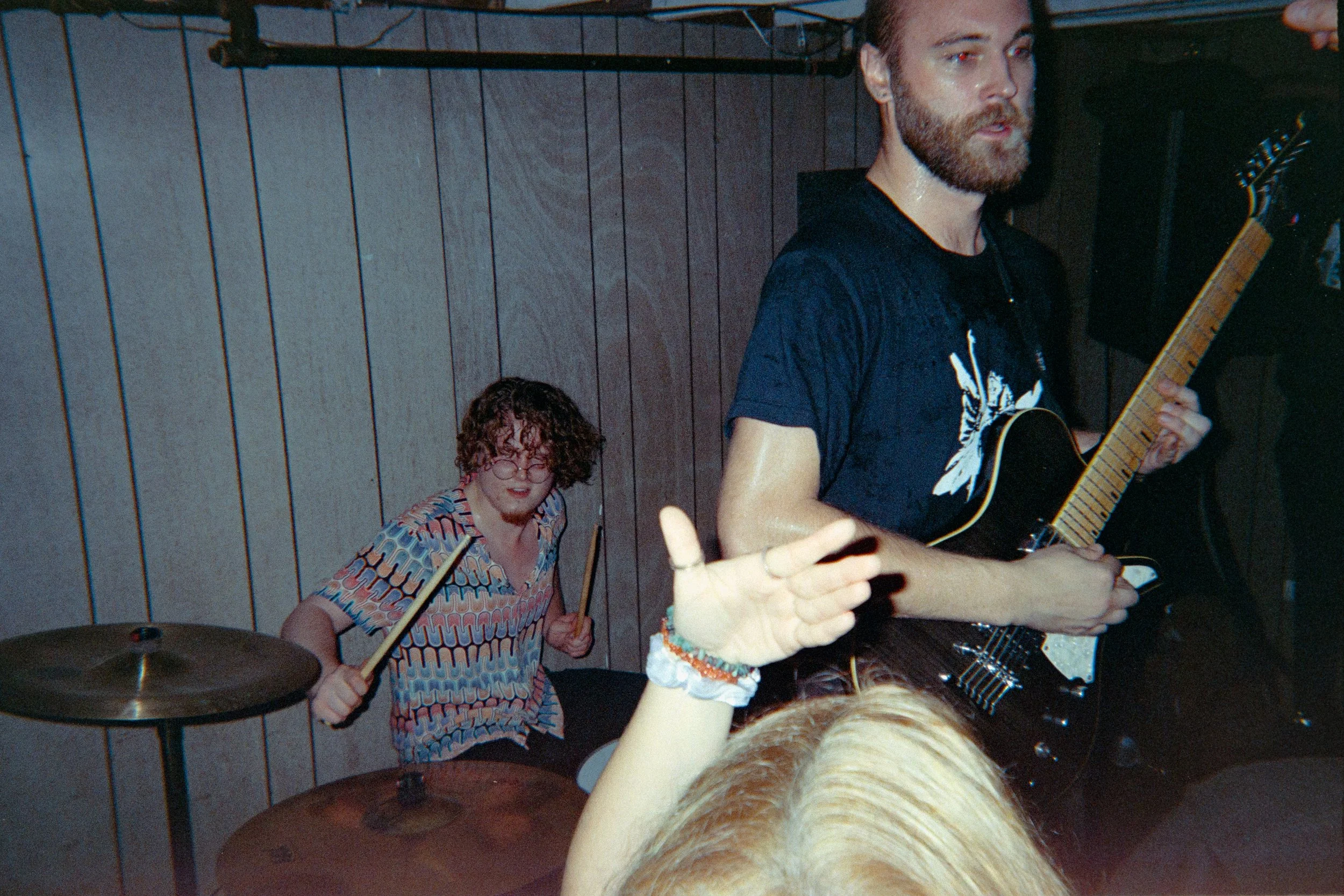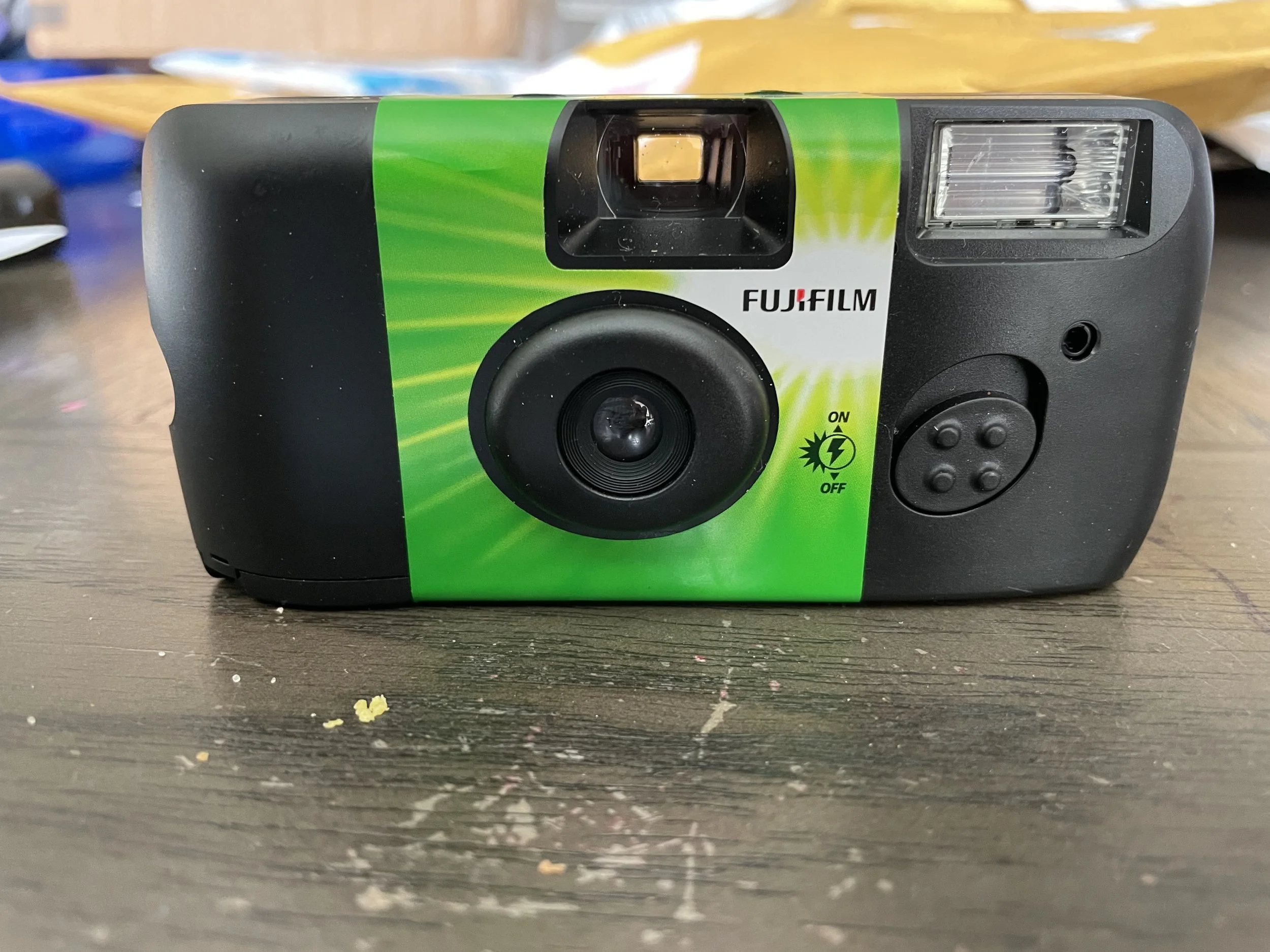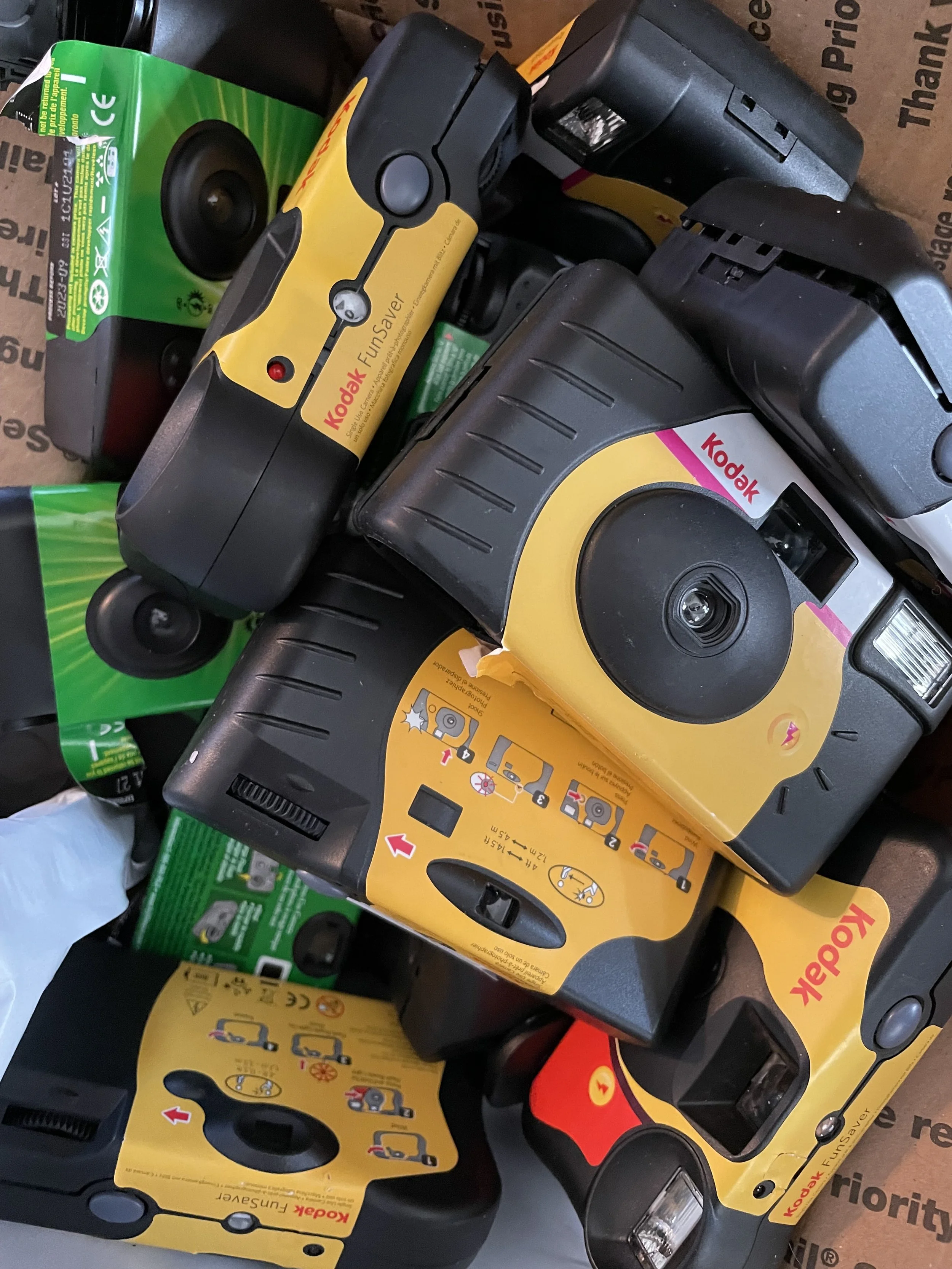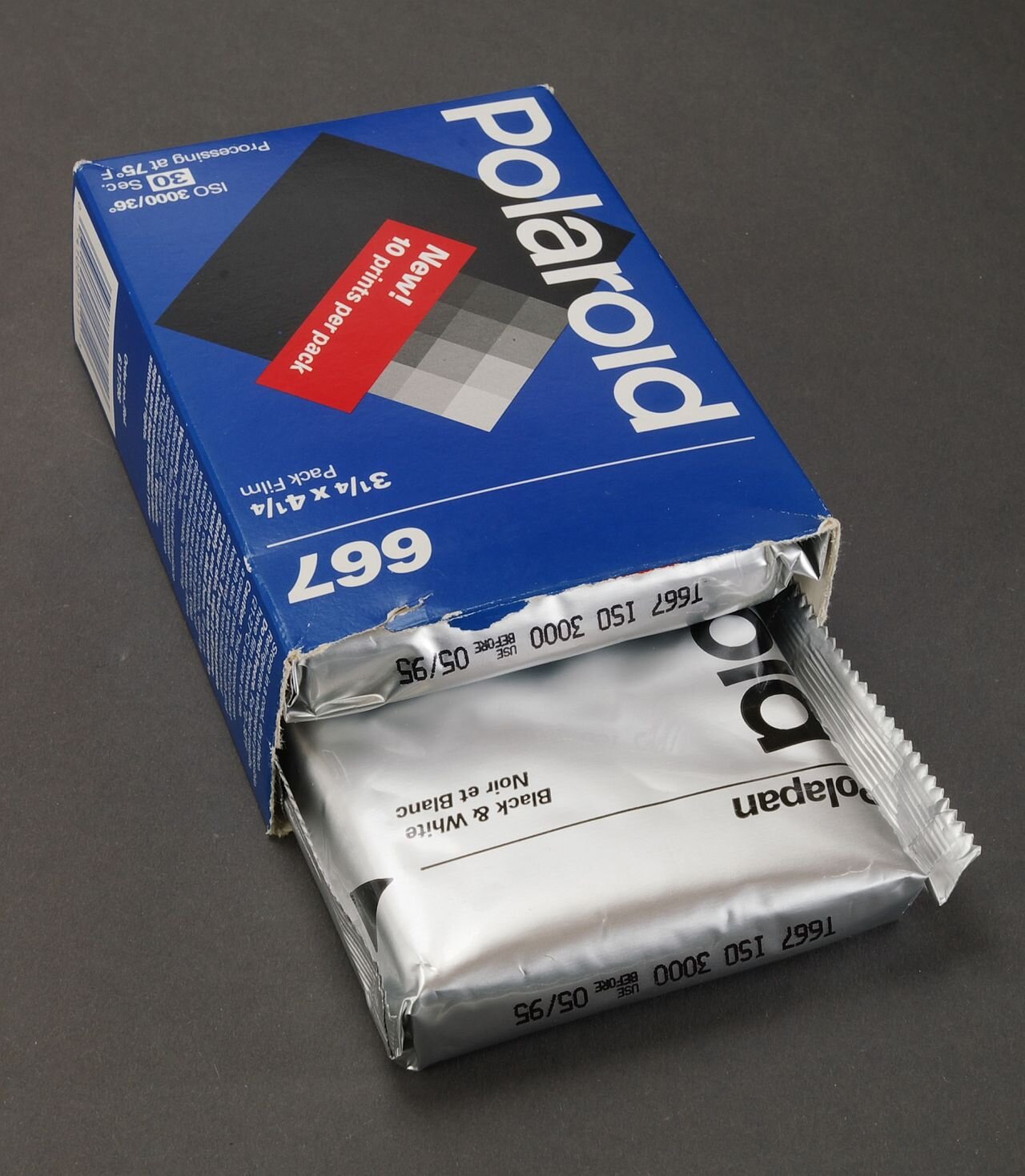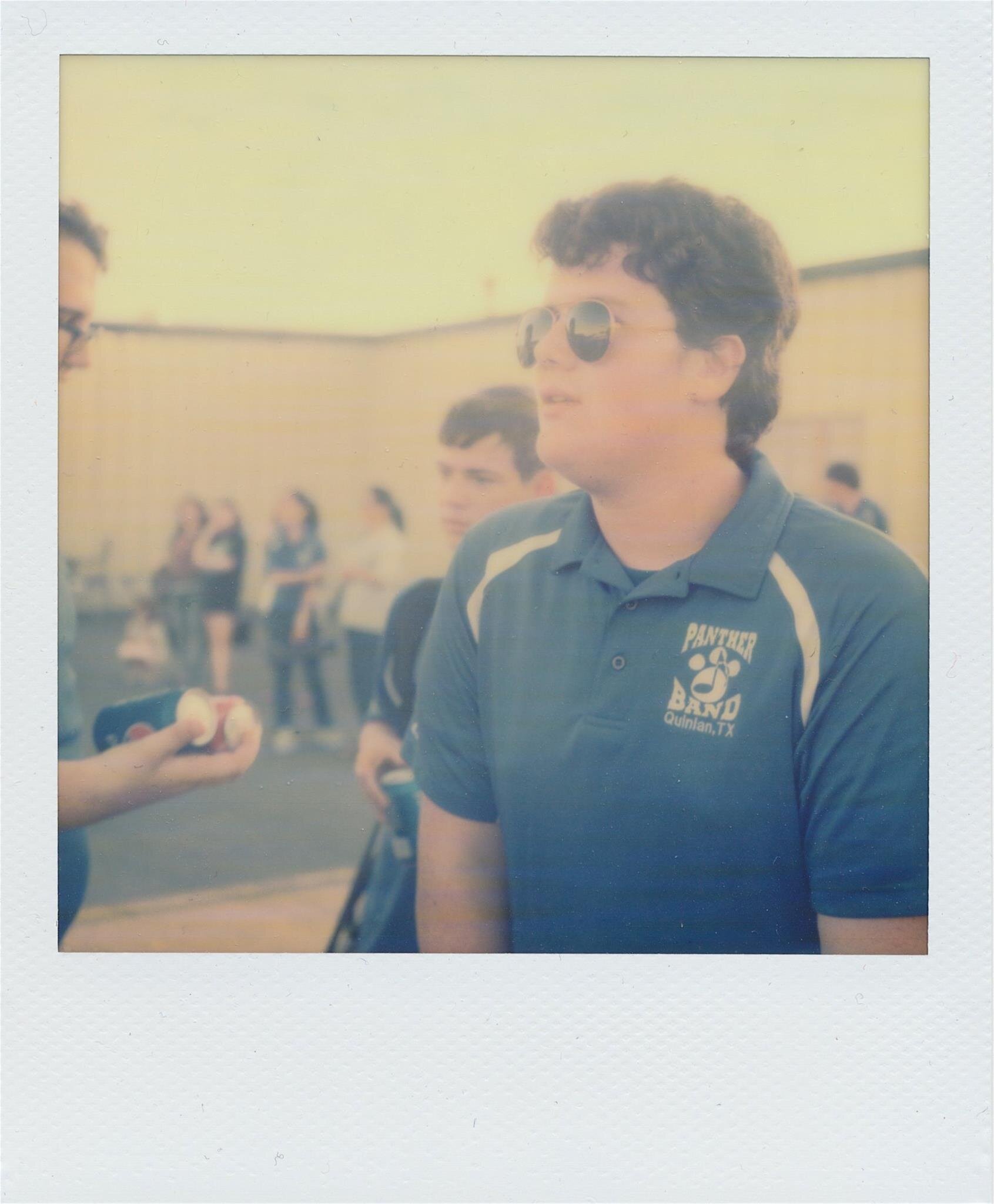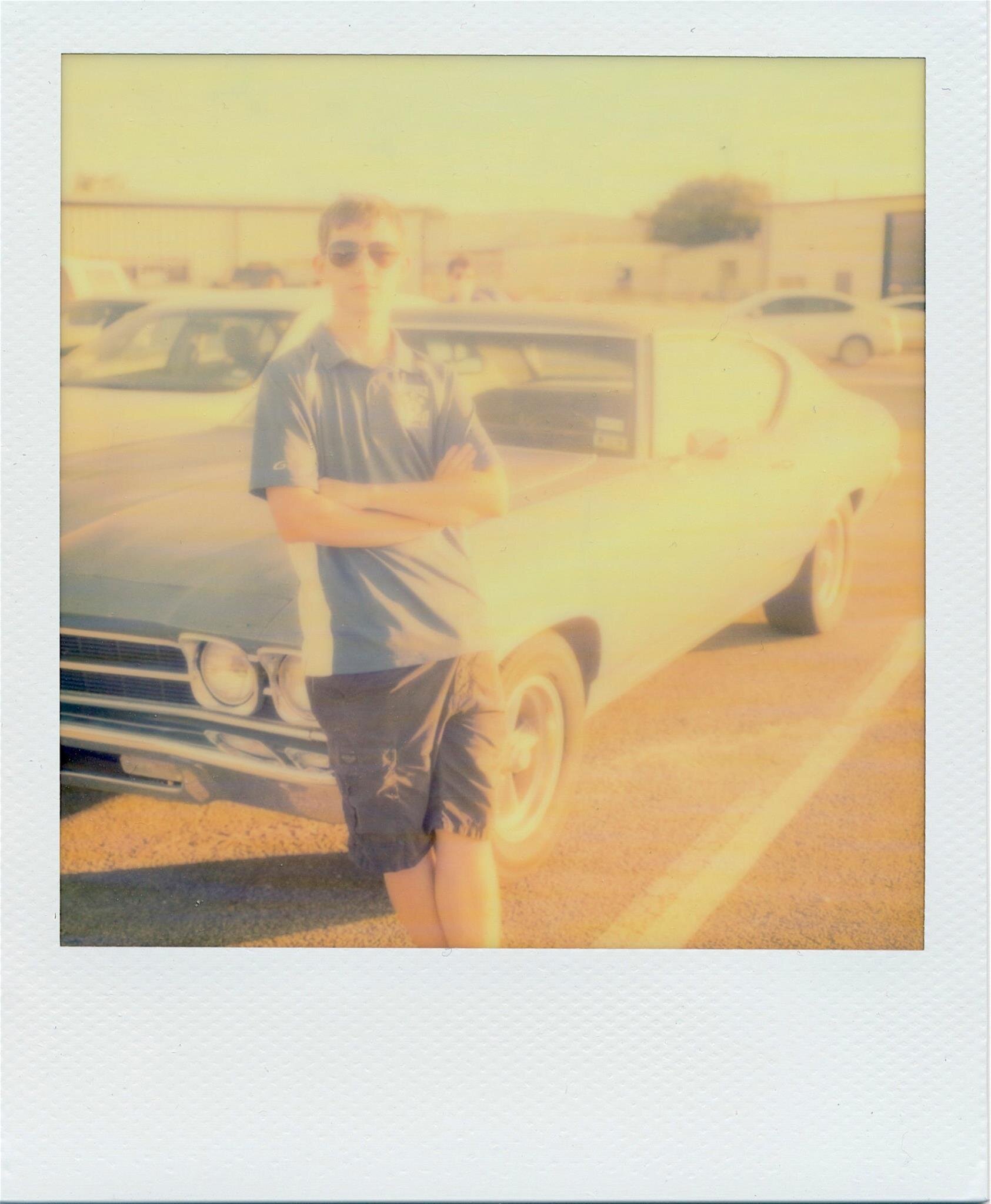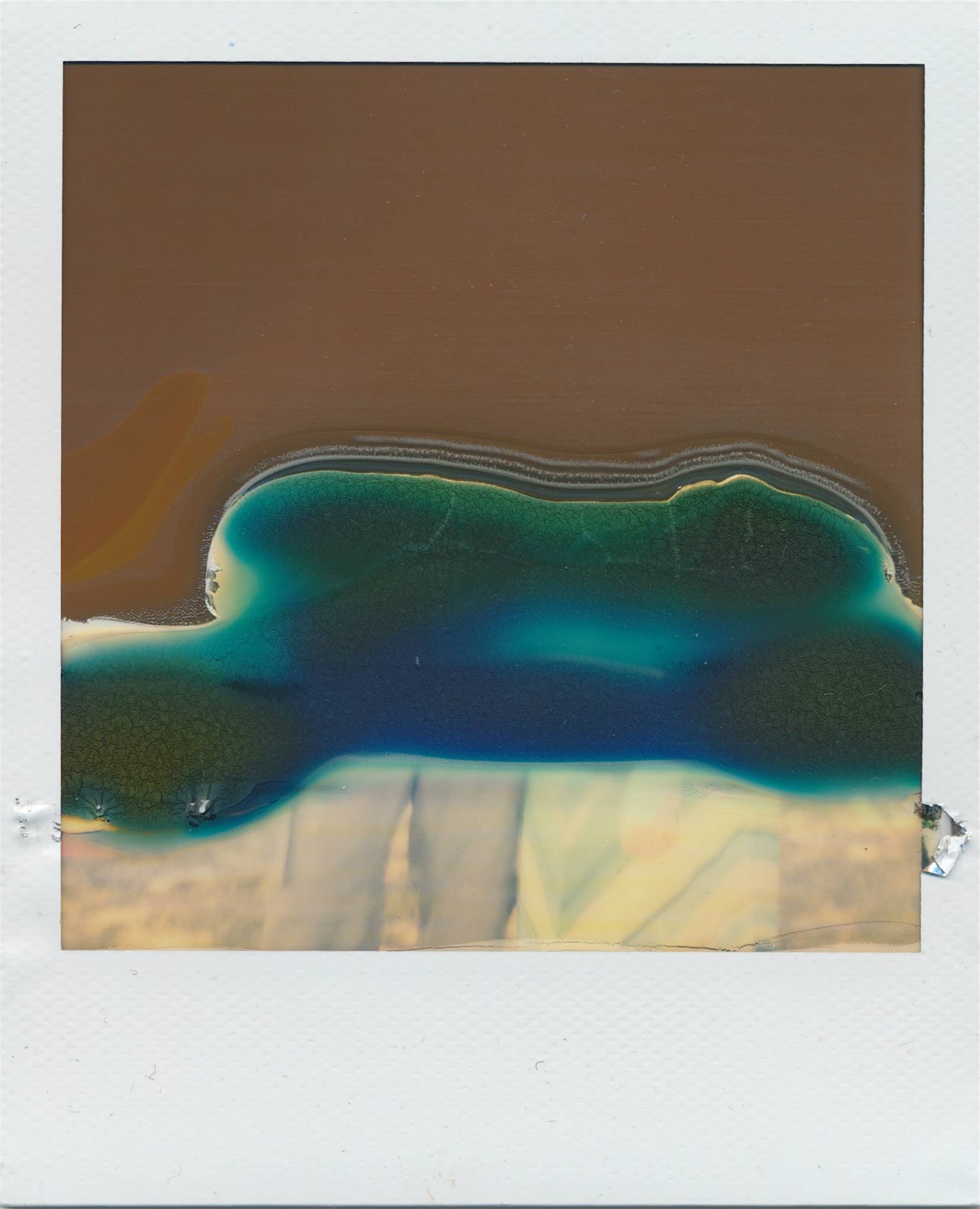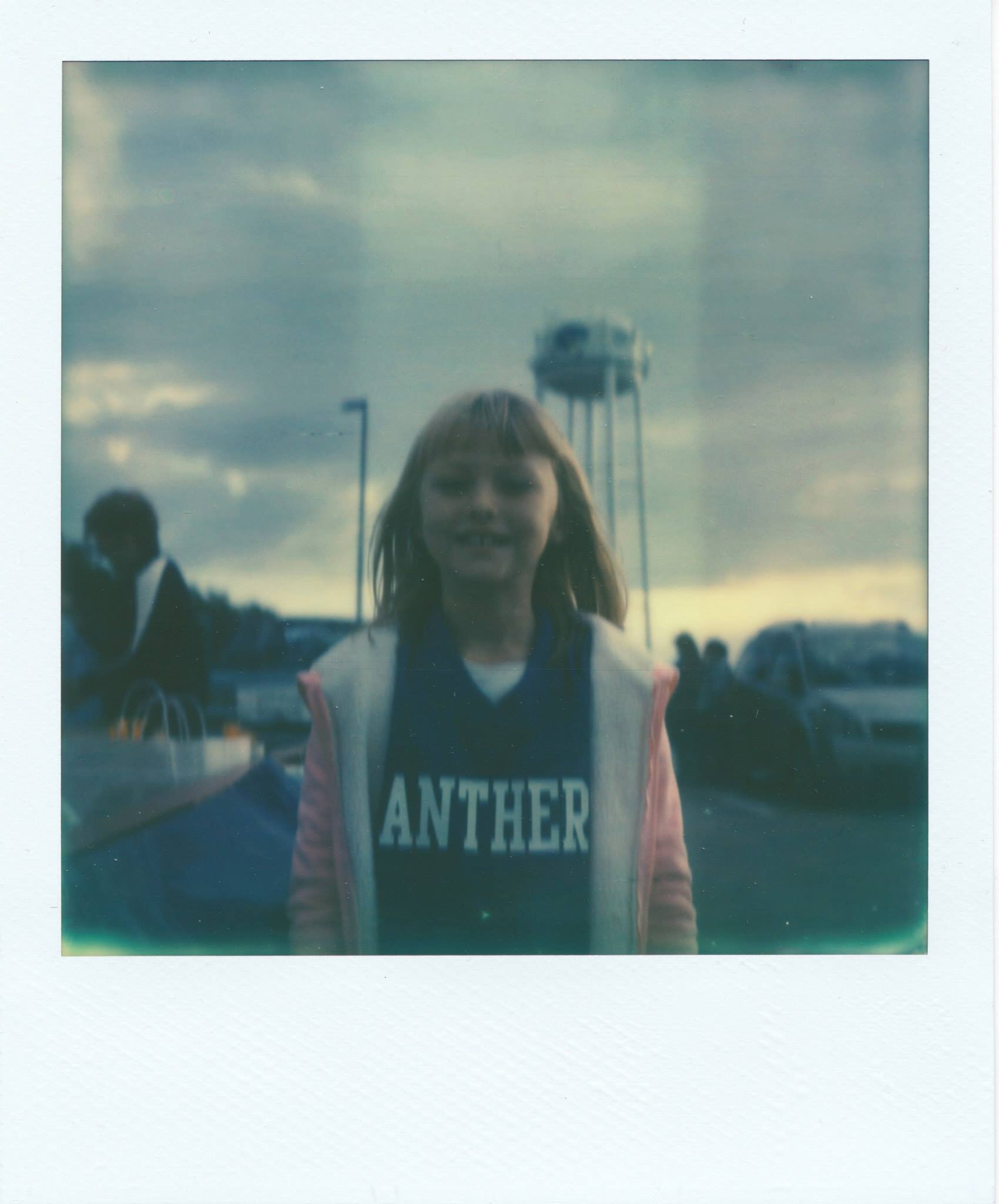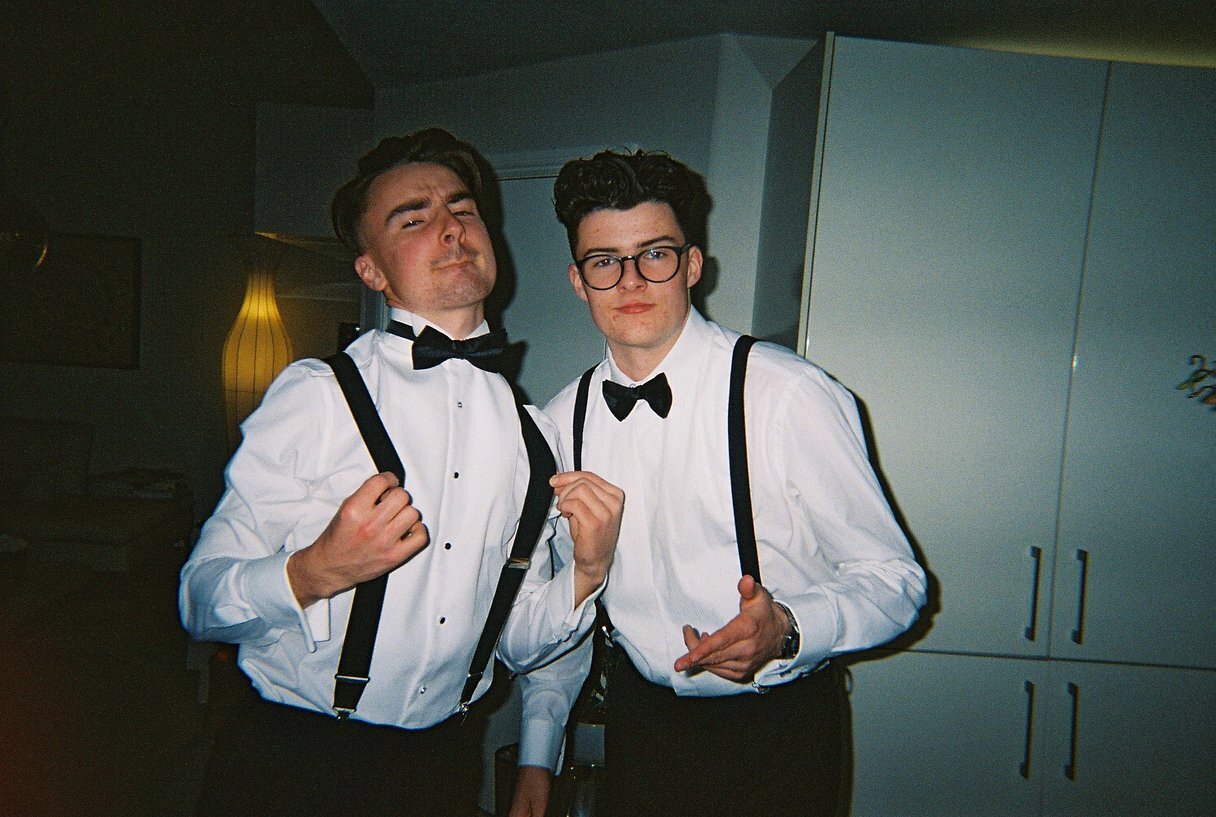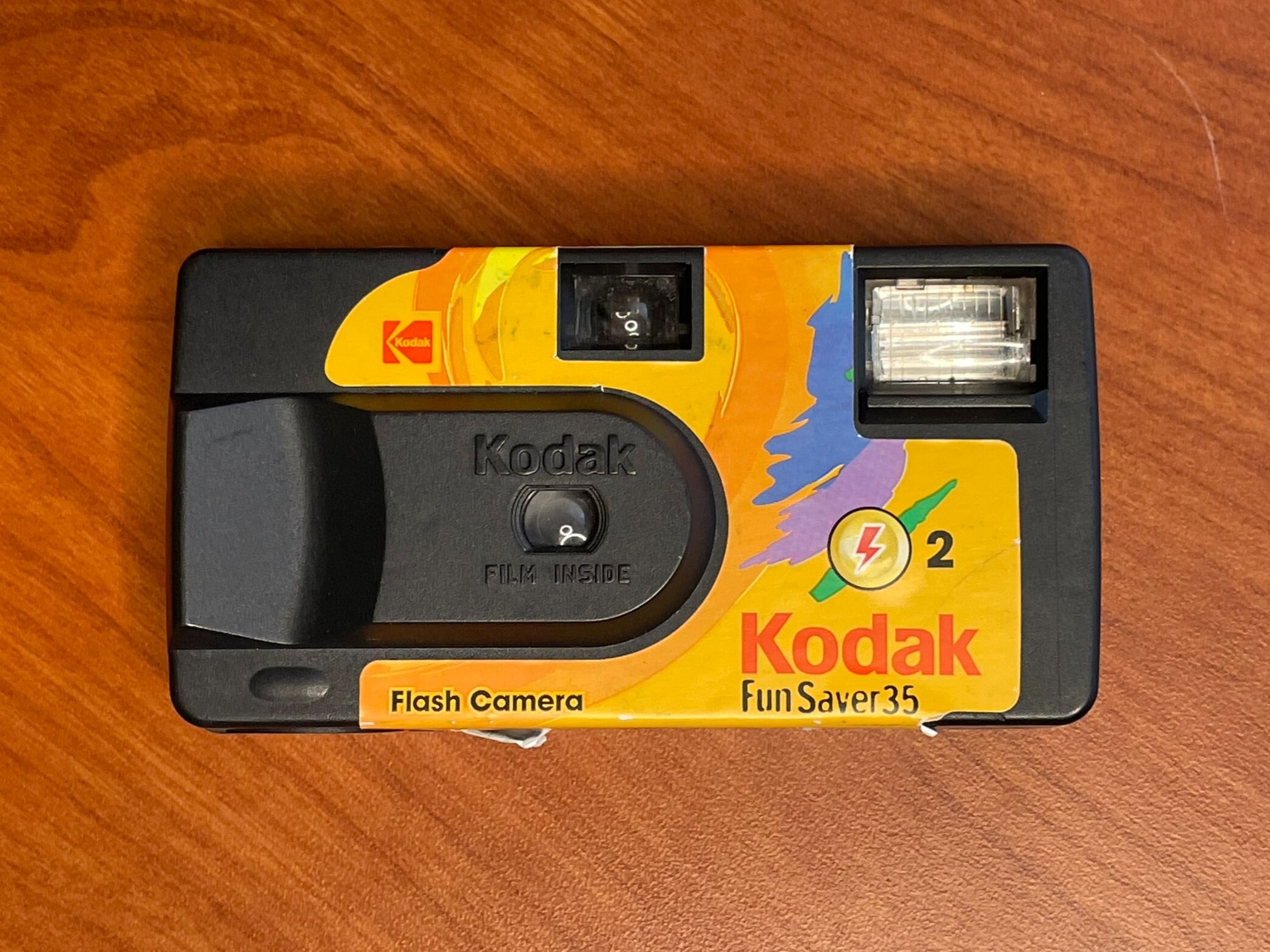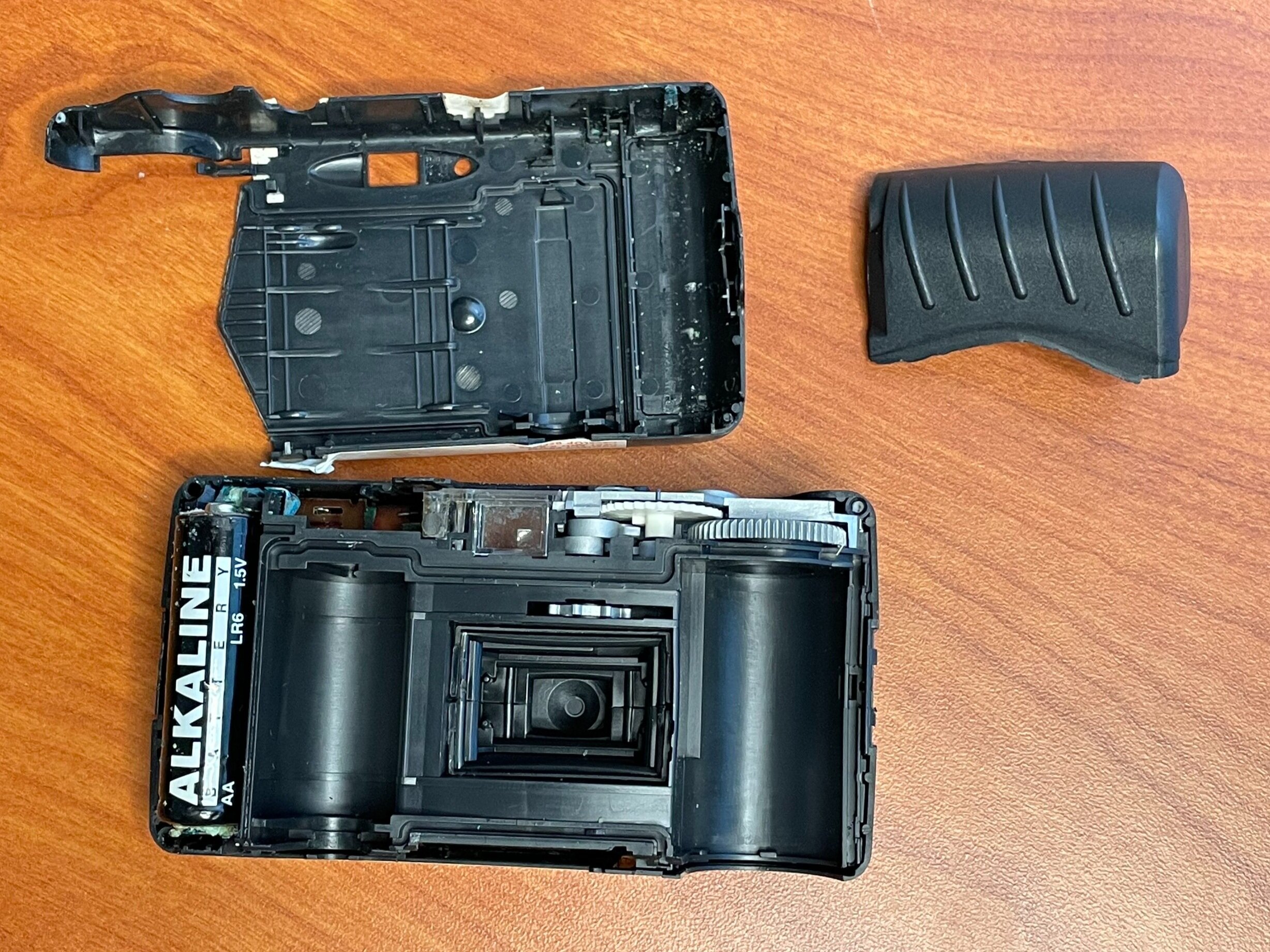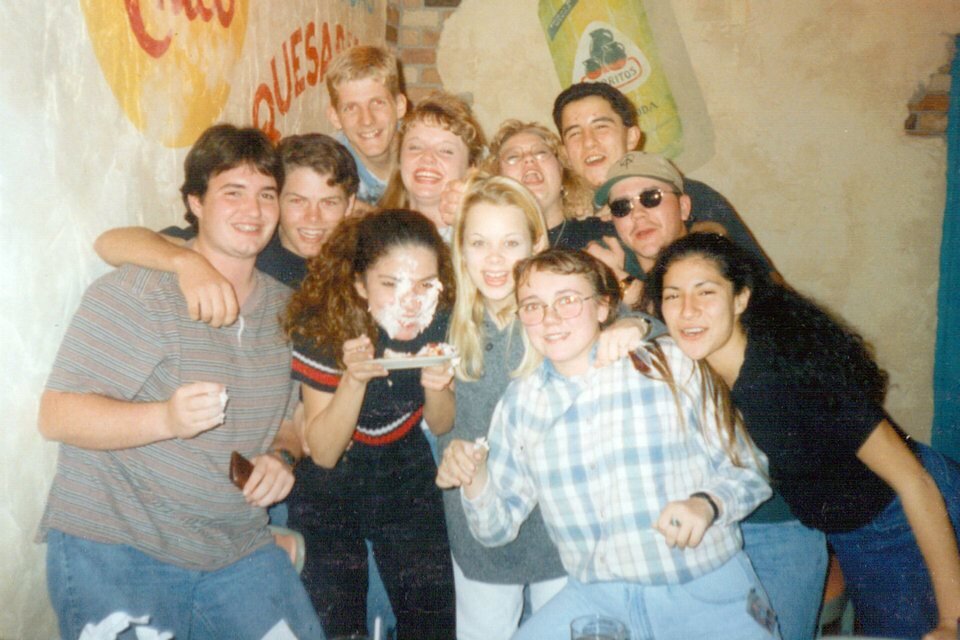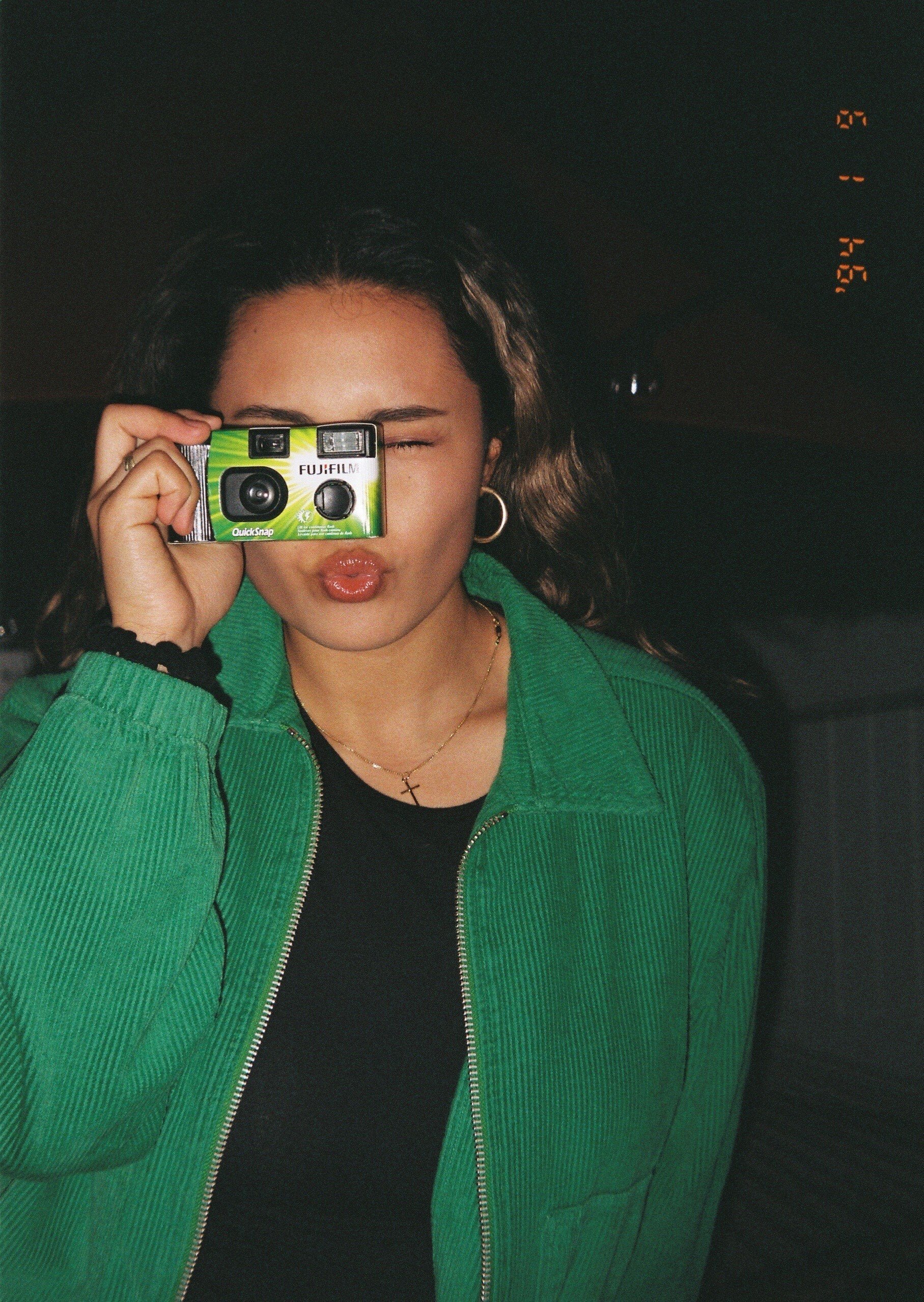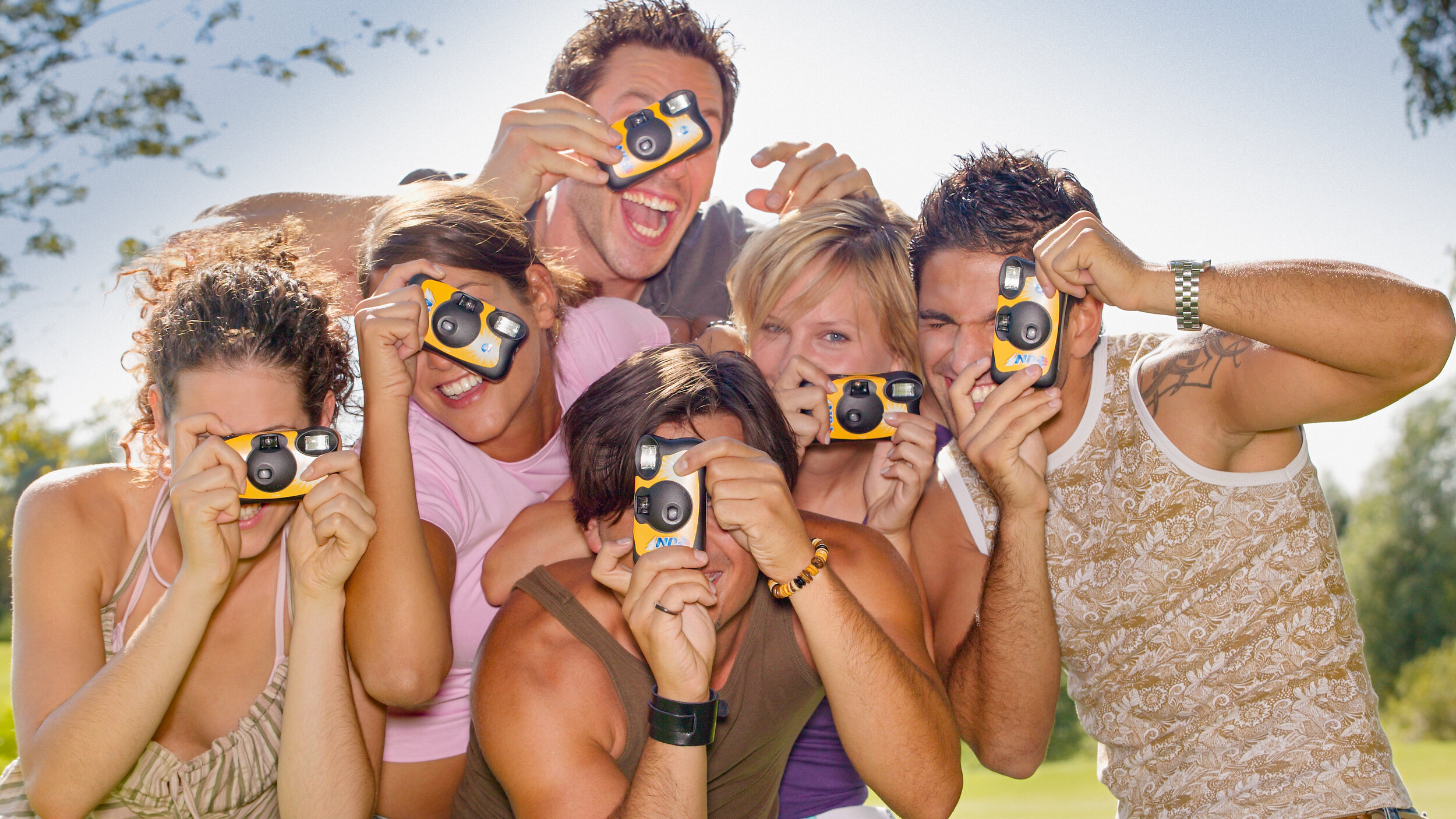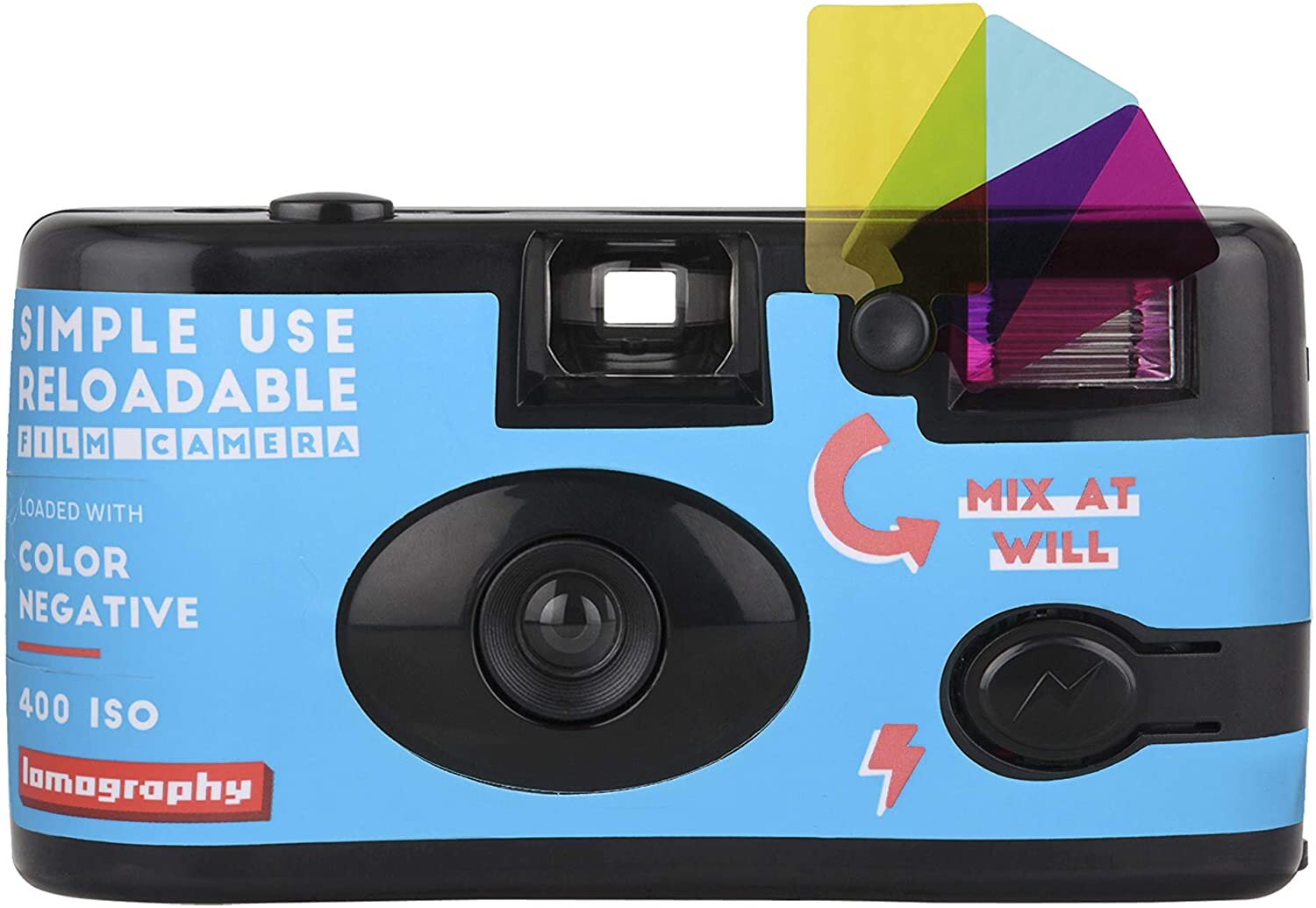It's time for a Disposable Camera Summer 2023
Disposable cameras are a great idea to bring along on all of your summer adventures!
Summer is just around the corner and it's time to start making plans for fun with family and friends in the sun, the waves, the forests, the hills, the highways and wherever else the warm summer breeze might take you. While making your plans, its time to start thinking about which disposable camera or simple-use camera you want to pack in your suitcase!
How to pick a disposable camera for Summer
No matter what your summer plans are, there’s a disposable camera that’s perfect for you! When considering which camera is going to work best, it’s a good idea to keep the main thing that affects all cameras and film in mind - LIGHT! A day at the beach filled with lots of sunshine from above and reflecting off of the sand and waves requires a much different camera than if you’re hiking through the woods or heading off to summer camp. Knowing a few details about each of the cameras that are out there will help you make the right choice. So here’s a list of the disposable cameras currently available and our recommendations on how they can best be used to save your summer memories!
Kodak Funsaver Disposable Camera
The Kodak Funsaver is a great summer camera. This camera comes loaded with ISO 800 film, which means its more sensitive to light that some of the other cameras out there. This camera is easy to hold on to and super simple to use. It’s generally a square, but has some curves that help your gripe the camera. The only problem is that these curves add to the bulk of the camera and make it difficult to fit into some pockets.
This camera works great outdoors and indoors (with the flash). In sunlight, you can capture big scenes of mountains, groups of friends, activities, busy streets, and whatever you can fit in the frame. The Kodak film inside produces vibrant colors and relatively good sharpness considering its plastic lens. You do have to be careful of really bright places, like snow covered mountains or fields or light colored sandy beaches. Many of our customers overexpose their images in these situations and end up with super grainy beach shots with distorted colors from over exposure.
Indoors and in shady spaces, you’ll be relying upon the flash and your ability to take pics will be limited to subjects within 1 to 3 meters (3 to 9 feet). Outside of that range, images will be too dark or too bright. At a concert or in a large event at night, you can possible get a good shot of the stage, if it’s well lit, but if you’re sitting way back in the cheap seats, you won’t get much detail.
Kodak Funsaver Disposable Cameras are great for
Summer Camps
Hiking
Camping
Parks and picnics
Outdoor and Indoor Parties
Kids events
Outdoor Weddings and indoor receptions
Kodak Funsavers will work at
Indoor concerts
Night events
Kodak Funsavers do not work well at/in
Bright beaches during daylight
Snow covered ground or mountains during daylight
Large indoor or night concert venues
Dark rooms without the flash
Kodak HD Powerflash Disposable Camera
The Kodak HD Powerflash is another great summer camera. This camera comes loaded with ISO 800 film also, so much of what we said about the Kodak Funsaver also applies.. This camera is easy to hold on to and super simple to use. The Kodak HD Powerflash has a thinner profile and more square shape, meaning that it fits better in pockets and purses. While it doesn’t fit as nicely in the hand as the Funsaver, the HD Powerflash is still easy to hold on to even while moving or running.
The Kodak HD Powerflash works great outdoors as well as indoors. But the camera lives up to its name, Powerflash, providing a lot more illumination in dark places. Bars, wedding receptions, dorm rooms, camp bunks, worship events, and many other generally darker places can benefit from the built-in flash that comes on the Kodak HD Powerflash.
But just like the Kodak Funsaver, this camera can also be easily overexposed. Bright sunny beaches, sunny snowy days, and taking selfies too close will result in some severely over exposed photos. We recommend these cameras to our wedding customers because of how well they perform in darker places, but when those wedding guests begin to take selfies with the camera too close, it can leave you looking at best washed-out and at worst, ghostly.
Kodak HD Powerflash Disposable Cameras are great for
Summer Camps
Hiking
Camping
Parks and picnics
Outdoor and Indoor Parties
Kids events
Outdoor Weddings and indoor receptions
Kodak HD Powerflashes will work at
Indoor and outdoor night concerts
Night events
Kodak Funsavers do not work well at/in
Bright beaches during daylight
Snow covered ground or mountains during daylight
Dark rooms without the flash
Taking Selfies
Fujifilm Quicksnap Disposable Camera
Differing from the Kodak single-use cameras, the Fujifilm Quicksnap comes loaded with 400 ISO film, making it less sensitive to light. The Quicksnap comes with a flash that has a dedicated on and off rather than a flash charging button like the Kodak disposable cameras offer. Combined with his lower light sensitivity, the ability to leave the flash “on” will help prevent you from getting a totally dark image when you forgot to charge the flash.
The Fujifilm Quicksnap Disposable camera produces amazing images outdoors in sun and shade. From the baseball field to the city streets, this camera loves daylight and produces beautiful images. Where the camera begins to struggle is indoors and at night. As long as you use the flash, photos taken in small rooms still look great. In larger rooms, the flash begins to lose its ability to light the subject and the background. In big spaces or outdoors in night or low-light, the camera can still illuminate the subject as long as they are within 3 to 9 feet, but you’ll notice in your images that the backgrounds become mostly black as the flash is not able to produce enough light to make an image on the 400 speed film. We see this a lot in wedding receptions, backgrounds are almost always completely dark and unseeable. This isn’t necessarily bad, just a characteristic that you should keep in mind while shooting.
We see a lot of these cameras used on school trips, trips to Disney Land, and summer camps, where they work extremely well. Dark bunks and Epcot both look amazing on the Fujifilm Quicksnap! They are rugged and durable and very easy to use, perfect for kids doing a lot of outdoors events.
Fujifilm Quicksnap Cameras are great for
Summer Camps
Hiking
Camping
Parks and picnics
Outdoor and Indoor Parties
Kids events
Outdoor Weddings and indoor receptions
Bright beaches
Snowy places
Fujifilm Quicksnap will work at
Indoor concerts
Camp Cabins
Fujifilm Quicksnap do not work well at/in
Dark spaces
Large indoor or night concert venues
Dark rooms without the flash
Kodak Sport Waterproof Disposable Camera
Going for swim, or dive? Or just don’t want to ruin your disposable camera to get damaged by water? You will want to pick up a Kodak Sport Waterproof Underwater camera. These cameras work great for diving and snapping pics of corral reefs and tropical fish but also work just as well at the local waterpark or your own backyard pool.
The Kodak Sport Waterproof Disposable camera is a more bulky camera but is covered in an easy to grip and hold on to rubber coating. The film advance is a breeze to turn, even if you have wet fingers or are underwater. It probably won’t fit in a pocket, but it does come with a rubber wrist strap that will help you to hold on to your camera no matter where you take it!
The Kodak Sport Waterproof also comes loaded with 800 ISO film, which it needs because it does not come with a flash. That’s ok though, a flash just wouldn’t work underwater! These cameras take great photos on land, but are susceptible to the same over-exposure issues of the other Kodak disposable cameras. Underwater, they still need a ton of light to produce good images. Clear water also helps a lot. We develop a lot underwater cameras and the biggest mistake our customers make is that they go too deep while diving and lose light, to the point that their images become grainy with distorted colors. Murky or muddy waters also produce some very poor images. 800 ISO film works in some dark places, but light disperses through water very quickly, so if you’re diving deep or diving close to the beginning or end of the day, keep in mind you might not have enough light to produce an image.
Kodak Sport Waterproof Cameras are great for
Swimming Pools
Rafting
Canoeing
Water gun fights
Water parks
Rainy days
Kodak Sport Waterproof Cameras will work at
Daylight events
Camping
Hiking
Kodak Sport Waterproof Cameras do not work well at/in
Dark spaces
Night events
Shade
Murky water
Early or late diving events
Fujifilm Waterproof Disposable Camera
The Fujifilm Waterproof Disposable camera works almost identically to the Kodak Waterproof camera. Unlike the Fujifilm Quicksnap, this underwater camera comes with 800 ISO film, giving it additional range since there is no flash installed on this camera. But just like the Kodak version, there are many limitations.
In our lab, the Fujiflm and Kodak waterproof cameras perform almost identically. Both are great cameras and availability might be the only determining factor for you when it comes to selecting which camera will work best for you.
FujiFilm Waterproof Cameras are great for
Swimming Pools
Rafting
Canoeing
Water gun fights
Water parks
Rainy days
FujiFilm Sport Waterproof Cameras will work at
Daylight events
Camping
Hiking
FujiFilmSport Waterproof Cameras do not work well at/in
Dark spaces
Night events
Shade
Murky water
Early or late diving events
Conclusion
Summer brings with it so many fun activities and events. There’s no reason why you shouldn’t be taking pictures while you're making memories! While camera phones are the standard today, they may not be the best option for your summer activities. Disposable cameras are rugged and durable, don’t need to be recharged, don’t have delicate glass screens, and don’t cost you a monthly cellular connection fee. And whether it’s for you or your kids, disposable cameras have that cool vintage vibe that will help to make your summer memorable. Make a disposable camera a part of your summer plans and you’ll be able to enjoy your memories of summer on 35mm film forever!
Make sure you think about the light! That’s the biggest issues we see customers struggle with. They get the wrong camera for the situation and never have enough light to make their images look good. By getting the right disposable camera, you’ll make sure your images all turn out great!
The nostalgia of disposable cameras: a modern take on film photography
Disposable cameras can give your pictures a new level of cool!
In a world where digital cameras and smartphones dominate the photography landscape, it's easy to forget the simplicity and nostalgia of film photography. But disposable cameras are making a comeback, and they're proving to be a refreshing and modern take on the art of analog photography.
The nostalgia of disposable cameras lies in the unique charm and imperfections that film can offer. Unlike digital photography, which allows for instant reviewing and editing of photos, film photography requires a certain level of patience and trust in the process. The anticipation of waiting for the film to be developed and the surprise of seeing the final images can be incredibly rewarding.
Disposable cameras offer a fun and accessible way to get into film photography, without the investment of a pricey film camera. They're perfect for capturing memories in a candid and unplanned way, without the pressure of getting the perfect shot. The simplicity of disposable cameras also allows for a more carefree and spontaneous approach to photography, which can lead to some of the most genuine and heartfelt photos.
Disposable cameras are also a great choice for special events like weddings, parties, and travel. They add a unique and nostalgic touch to the final photographs, and they can also encourage guests to be more engaged and participatory in the event. Plus, disposable cameras make great party favors or travel souvenirs.
The nostalgia of disposable cameras doesn't just lie in the past, but it also pushes to a new and refreshing future. In the digital age, it's easy to feel overwhelmed by the constant need to capture and document every moment, but disposable cameras allow us to step back, slow down, and savor the present. It's the art of not knowing what you're going to get that brings the thrill back into taking photographs.
In conclusion, disposable cameras offer a modern and refreshing take on film photography. They're fun, simple and nostalgic, and they're a great way to capture memories in a unique and candid way. Whether you're a seasoned pro or a beginner, disposable cameras are a great addition to your photography arsenal. So why not try one out and see how it can change your perspective on photography and bring back the nostalgia of film.
Are you looking for a place to develop your disposable camera or film? We can help! Click the button below to check out our disposable camera developing services!
The art of analog: how disposable cameras are changing the photography game
Disposable cameras are a great way to break into the film photography world!
In a world where digital cameras and smartphones reign supreme, disposable cameras may seem like a relic from the past. However, these simple point-and-shoot cameras are experiencing a resurgence in popularity, as more and more photographers are discovering the unique charm and creativity that film photography can offer.
The art of analog photography is all about embracing the imperfections and unexpected results that film can provide. Unlike digital photography, which allows for instant reviewing and editing of photos, film photography requires a certain level of patience and trust in the process. The anticipation of waiting for the film to be developed and the surprise of seeing the final images can be incredibly rewarding.
Disposable cameras, in particular, offer a fun and accessible way to get into film photography. Without the investment of a pricey film camera, anyone can pick up a disposable camera and start experimenting with the medium. The simplicity of the cameras also allows for a more carefree, spontaneous approach to photography.
But it's not only enthusiasts and hobbyist that are being drawn to the simplicity and nostalgia of disposable camera, professional photographers also are turning to disposable cameras as a way to add a new perspective to their work. Some of them use them as a tool to inspire a more intuitive and less planned way of working, whilst others use them as a form of self-imposed constraints when working on a project or for their personal work. It's the challenge of getting the perfect shot with just 27 or 39 shots that drives them to try new things and to see the world from a new angle.
Disposable cameras are also a great choice for events such as weddings, parties, and travel. Not only do they add a unique and nostalgic touch to the final photographs, but they can also encourage guests to be more engaged and participatory in the event. Plus, disposable cameras can be a fun and creative party favor or travel souvenir.
In conclusion, disposable cameras are a refreshing change from the digital norm, and they're a great way to explore the art of analog photography. With their simplicity and unexpected results, disposable cameras are sure to inspire creativity and bring a new perspective to your photography. Whether you're a seasoned pro or a beginner, it's worth giving disposable cameras a try and see how they can change your photography game.
What is a Disposable Camera? All the Basics of Disposables
A camera that you can just throw away? Is that really a thing? Well, the answer is yes, and no. Disposable cameras have been around since the late 1980’s, though some iterations of them existed before then, and for several decades were extremely popular. While sales declined after the release of the original iPhone, they never completely stopped and disposable cameras are still being produced today by Kodak, Fuji, and a few other manufacturers.
But what exactly is a disposable camera? What is a disposable camera used for? How does a disposable camera work? These are all questions we are going to explore as we look into the world of disposable or single-use cameras
What is a disposable camera?
Disposable cameras were created during the days of film, when the cost of 35mm cameras was still quite high as an alternative to lugging your expensive Minolta camera around or sending your Nikon SLR to camp with your 7 year-old kid. A disposable camera consists of a plastic shell body, a plastic lens, some simple electronics, and extremely simple shutter, and a roll of 35mm film. The modern version of the disposable camera was created by FujiFilm and Kodak soon released their own 35mm film version. Today, disposable cameras still use 35mm film, iso 800 in Kodak cameras and iso 400 in FujiFilm cameras. Other brands and varieties of disposable cameras exist, such as black and white versions from Ilford and Kodak, but we will mainly be discussing the color negative 35mm film disposable cameras.
Disposable cameras were built to be durable, affordable, simple and easy to use, but still functional enough to produce a decent image even in the hands of an amateur photographer. They are essentially an extremely simple point-and-shoot style film camera. There is no focus, only a focus range. There are no adjustments, shutter speed, aperture, and film speed are set. And the only option you have to try to control exposure is a battery-powered flash which is activated by pressing or sliding a button on most models.
Framing your image is also very basic. Your are given a viewfinder, however it only approximates the image to be taken. Some people struggle with this as most individuals are used taking photos on their phone where they can see in a live view that the image is going to look like. The trick is to try to allow enough space in the frame for any errors by backing up just a little bit. The closer you are to the subject, the more “off” your image will be from the view finder. But for the most part, it won’t ruin your disposable camera pictures unless you are trying to take serious portraits, which no one really does.
What can you use a disposable CAmera For?
Disposable cameras are great for a lot of different purposes. Even though they are designed for simple use, their design and use of 35mm film produces really great results. In many situations, disposable cameras produce better looking results than iPhone and other cell phone cameras. Here are a few scenarios where a disposable camera would work much better than a camera phone.
Outdoor Adventure
The rugged nature of camping, river rafting, hiking, climbing, and anything else outside make it difficult to justify the risk of taking your expensive phone along to get photos. The difference in cost is absurd. A disposable camera might cost as much as $25 companies to a new phone which could easily run $1000 or more. Dropping your phone, cracking your screen is a very real risk, and not just while you’re holding it in your hand. One wrong fall could ruin your phone! Disposable cameras very rugged and can endure a lot of punishment thanks to their simplicity of design. Disposable cameras also carry their own power source and do not need recharging to take photo, where a camera phone would be much more difficult to keep charged on a longer trip.
On an outdoor adventure, a disposable camera has these advantages:
Rugged and durable
Cheaper to replace if lost or damaged
Does not need recharging
Takes amazing photos outside during the day or night!
Kids Summer Camp
The kids are going away for a week, or two, or if you’re lucky a month or more, but there’s a really good chance that your awesome but someone irresponsible child might not make it back with their expensive smart phone if you allow them to use it freely. Disposable cameras are perfect for Summer Camps! The same lower-cost if lost principle applies and being very rugged and durable doesn’t hurt either. Plus, your child will be the coolest kid there when they pull out their film loaded disposable camera while all of the other nerds are using those lame camera phones.
At a summer camp, a disposable camera has these advantages:
Rugged and Durable
Cheaper to replace if lost or damaged
Does not need recharging
Cool factor
Simple to use
Can be customized with markers, paint, and/or stickers
Parties
Disposable cameras are fantastic for parties of all sorts, but disposable cameras are absolutely amazing for parties where things might get a little crazy. If there’s going to be a lot of alcohol involved, disposable cameras are an absolute must! Rugged, durable, cheap, all apply here, but there are several other factors introduced by the party environment that you might not have considered.
At a party, a disposable camera has these advantages:
Rugged and Durable
Cheaper to replace if lost of damaged
Does not need recharging
Cool factor
Simple to use, even if you’re intoxicated
You can’t drunk-text an ex with one
You can’t share embarrassing images the moment you take them
Any embarrassing images you do take can just be throw away before anyone else sees them
A Night on the Town
Heading out to the bar or the club or even a concert with your friends? A disposable camera is a perfect addition and takes great photos, as long as your remember to use your flash! For all of the same reasons above (rugged, durable, cheap, etc) a disposable camera can add an element of fun and adventure to your night out!
Conclusion
What is a disposable camera? A disposable camera is an affordable alternative to using your cell phone or an expensive digital or film camera that allows you to add a unique look and vibe to your images! They are not instant, but they are fun in that moment. The click of the shutter, the flash of light, and winding to the next frame, make the experience something memorable.
Got Questions about Disposable Cameras or Developing?
Send us an email and we’d be happy to answer any questions you might have! From buying disposable cameras to developing them, we are the disposable camera experts!
Where Can I Buy Peel-Apart Film for Polaroid Land Cameras?
Fujifilm officially stopped producing peel-apart film, but can you still purchase it anywhere? This short post will tell you everything you need to know about buy peel-apart instant film today!
The minute Fuji announced they would be discontinuing FP-100C peel-apart film for older polaroid cameras, then film began to fly off of the shelves. The Fuji made film which sold for around $20 per pack was often sold out at the normal places and prices began to increase as people were trying to buy up as much as they could to use or horde and sell later at a ridiculous profit. But because so many people purchased and held on to sell later, even years down the road it is still possible to find the Fuji film in color and black and white. You can even still occasionally find some very expired Polaroid peel-apart film. You also currently have then option to purchase some of the new One Instant pack film from Supersense.
If you’re looking for some film to shoot, here’s a break down of where you can still find Peel-Apart film for Polaroid cameras and what you can expect to pay as well as what you need to watch out for.
Where Can I Buy Peel-Apart Film for my Polaroid Camera?
ONE INSTANT by Supersense
Supersense is a great little group of creative individuals working hard to keep peel-apart film alive. I love their passion and ingenuity, but product isn’t quite the peel-apart film that we are used to. It requires a lot more care and concern when loading and the results are not as uniform as the mass produced FP-100C or even expired Polaroid film packs. With only one shot per paper pack, you have to be a little more careful when loading and you get less of a run and shoot experience. And at almost $40 for three exposures, ONE INSTANT is not the most affordable option for taking instant photos, but it is at least fresh chemistry and it works! And the guys are Supersense are a really great group of creative individuals, so you should definitely go support their efforts.
You can head on over to Supersense’s website to buy a few packs today if you want to give ONE INSTANT a try. CLICK HERE to go to their site.
You can actually purchase Fuji pack film from Supersense as well. They have the best and most consistent stock. The price is also reasonable considering that the film packs are in good shape. You can shop their store HERE.
Buy Fuji FP-100C on Ebay
eBay has been a good place to find Fuji FP-100C for years. The prices have fluctuated but have mostly settled. You can expect to pay at least $66.00 for a single pack of expired Fuji FP-100C. The newer (aka the later the expiration date) the film, the high the cost. You can also purchase bundles of film packs. When purchasing film from eBay, you want to make sure and find some that has been stored in a refrigerator. The liquid chemicals will dry out over time but keeping them cool keeps them from drying out. Most packs of FP-100C sell in the range of $75-$100 per pack.
Buy Polaroid Peel-Apart Film on eBay
Finding actually usable Polaroid pack film on eBay is quite a challenge. Most of the film out there has expiration dates in the 80’s or 90’s. Pricing starts in the low $20’s but that’s in unknown condition. Polaroid film, even when its expired is amazing as long as the chemicals aren’t dried up. I love it even more than the Fuji pack film.
At this point in time, buying Polaroid film is a gamble, but if you can find some that works, its an amazing experience! I’ve bought several packs on eBay, only to have a few work. But the results were well worth it.
Buy Fuji Peel-Apart Film on Amazon
While there used to be a large selection of Fuji FP-100C film on Amazon, it seems that the supply has mostly dried up. At the time of posting only one listing remains at a cost of $828.00 for 5 packs. Listings only appear occasionally so if you’re interested in picking up some real Fuji FP100C, this is your chance! CLICK HERE to go to the listing and place your order!
Buy Peel-Apart Film on Craigslist
Several people have had some luck finding Fuji film on Craigslist. The chances of finding it on your first look are slim, but if you check consistently you have a better chance of finding some for sale. The film used to be listed quite frequently but again, as supplies are being exhausted, they listings are disappearing.
Buy Peel-Apart Film on FaceBook Marketplace
More and more, packs of Fuji peel apart film are showing up on Facebook marketplace. As this film continues to age, you want to be careful about what you buy, making sure to ask the seller about its storage and history. Since there' aren’t as many protections for buyers on Facebook, Caveat Emptor.
Looking for Peel-Apart Film at Garage Sales
This is even a longer shot than Craigslist, but some people have found some really major scores. This is literally as difficult as looking for a needle in a haystack, but if you find some, its usually cheap!
You Can Still Buy Pull-Apart Film, But…
Your options are definitely limited and what options do exist out there are expensive. If you have the opportunity to pick up a pack of film, its definitely an experience like nothing else polaroid. The manual process of shooting, pulling, waiting, and then peeling, dealing with the sticky chemicals and discovering the beautiful image you’ve capture, its something every instant photographer needs to experience at least once before all of the film is gone!
If you own a Polaroid Land Camera and want to still find a way to use it, New Land Camera is working on an integral film back for Land Cameras. CLICK HERE to read more about the work they are doing!
Don’t forget to check out our other article discussing if Polaroid would be bringing pull-apart film back by clicking HERE!
What's Wrong with My Polaroid Film?
Troubleshooting your Polaroid film can be frustrating! This easy guide will give you an idea of where to start!
Last Updated: April 2, 2024
You got finally got your Polaroid camera and film and you’re excited about finally getting to take some photos. You get your model (your cat, dog, mom, dad, friends, whoever) posed just right and click the shutter release and hear that oh-so-pleasing motor noise as the first frame is eject. You wait patiently as the image slowly appears. Its kinda faint and has some weird coloring, got some smears but those are hopefully fading, but there’s an image there. You wait some more… And some more, for what feels like forever. When finally you figure the image is done. But as you behold your first polaroid image, the excitement melts into disappointment.
“Did I do something wrong?” is always your first thought.
“Maybe its the camera?”
“Maybe its the film? Is my film bad?”
What’s Wrong with My Polaroid Pictures?
There are a lot of things that could go wrong during the process, so don’t feel bad if your first images aren’t coming out right. Here’s a quick reference guide of things you can do to help make sure you get the best possible images when using Polaroid Film.
1. Don’t Let Any Light Hit the Polaroid When it Ejects from the Camera
Most of the newer cameras come with a frog tongue already installed in the slow where the film is ejected for this very purpose. The old Polaroid films were not as sensitive to light as the modern film is. Beginning with the Impossible Project and then Polaroid Originals and now back to Polaroid, all of the modern film suffers from a very serious light sensitivity issue. I didn’t learn this was an issue for quite some time back in the Impossible Project days and so a lot of my images were ruined from light exposure early in the developing process.
The best way to protect your film is to immediately get it out of any light, even if its still under the frog tongue. I make a practice to have a dark bag or keep the film box handy and as soon as the images are ejected, I put them directly in the dark somewhere and don’t look at them until they are completely developed.
If you’re using an older camera, like a Polaroid SX-70, you can purchase a frog tongue for your camera and its very easy to install. I have one for my SX-70 and it has saved me a lot of heartache with the developing process.
2. Temperature Control is so Very Important for Polaroid Film
Unused film exposed to heat and cold will cause a drastic color cast in your final image. Developed film will have either a yellowish or purple hue. Its definitely noticeable and once exposed to drastic temps, the film will not develop correctly.
Polaroid film also needs a stable temperature to develop correctly. If it’s cold out, stick the film in a pocket close to your body to keep it warm. If its warm out, get the frame somewhere cool as quickly as you can. Polaroid produces what is a fair weather film and using it in any harsh conditions means that you must give the film special care.
3. Avoid Purchasing Older Polaroid Film Packs
As Polaroid film ages, it doesn’t always seem to produce as good of results. Many of the film packs actually have their manufacture day stamped subtly somewhere on the box. Look for it and try to get the newest, freshest packs you can get.
Also, Polaroid does continually make small shifts and adjustments to their film. The new films generally offer the best results. While you can buy Polaroid film from local retailers like Target, Walmart, BestBuy, and others, I have found that ordering it directly from Polaroid gets me the freshest film packs.
4. Keep Your Rollers Clean
In the beginning, it was very common for the chemical pods in the films to leak out a little. Often the rollers of your camera would have dried chemical build up on there after a few photos and that will cause the rollers to struggle to spread the chemical evenly across the exposed film. A Q-Tip and a little Isopropyl Alcohol will clean those rollers right up!
5. I’ve got Blue Streaks on my Polaroid Film
This issue first showed up after then name changed from The Impossible Project to Polaroid Originals. The blue streak issue has mostly gone away with the newest of films, but it occasionally still shows up. Especially in older films. Unfortunately, there isn’t really anything you can do for the blue streak issue. They can sometimes add to the look but more than likely they’ll just mess up your image. This phenomenon has a specific name, Opacification Failure.
6. My Polaroid is Blurry
More than likely, its motion blur from a long shutter speed tryin get film exposed properly. If you’re images are turning out blurry, then you can move to an area with better lighting, or add/turn on the flash on your camera.
It could also be an issue of you being too close to the camera. All cameras/lenses have a minimum focal range. The minimal focus range for most Polaroid Instant Cameras is about an arm’s length. Anything close just won’t focus.
7. My Polaroid is Too Dark
The image is under exposed. Polaroids require a decent amount of light. Daylight or a flash are almost always required to get a proper exposure. Try turning your flash on, using a reflector to move some light around, or move your subject to a location where there is plenty of light.
Polaroid 600 and I-Type film work a little bit better in darker situations than the SX-70 Polaroid film does. Polaroid SX-70 film requires ridiculous amounts of light to expose correctly!
Other Polaroid Trouble Shooting Resources
If these tips don’t help you get the best photographs ever, then head on over to the Polaroid trouble-shooting page HERE. There are a lot of resources there to help you figure out what exactly might be going on with your film.
I’ve got a few other resource posts on Polaroid Film - take a look at those post by clicking the links below:
Is Polaroid Bringing Back Peel-Apart Film?
The Summer '21 Trend You Don't Want to Miss!!!
Make memories this Summer with Disposable Cameras!
Summer is almost here and there are all sorts of new trends in fashion, music, movies, and fun on the horizon. But today we want to talk with you about one new photo trend that on the rise on Instagram and Twitter and is set to be the BIG DEAL for Summer 2021.
And that big deal is…
Disposable Cameras!
Why Disposable Cameras are Great for Summer
When it comes to summer and fun, you don’t want a camera that’s going to slow you down! here’s why disposable cameras are great for everything you’ve got planned:
Small & compact
Cheap
Flexible for any shooting environment
Easy to use for anyone that wants to pick up a camera and get great photos!
Night or Day - The Look is Amazing!
Disposable cameras produce a really unique look. The plastic lens, the front facing high discharge flash tube, the grain and look of the film, and sometimes the occasional finger that gets in the way, disposables produce a really unique vibe that’s defining the Summer of ‘21. If you’re shopping for a camera you can use day or night, then you definitely want to pick up the 800 ISO film speed models. We carry the Kodak FunSaver in our online store - CLICK HERE TO CHECK IT OUT! - its a great night or day disposable.
Getting the Film Developed is Easy!
Even if you’re on the road, you can just drop your camera (or the film by itself if you want to open up the camera - follow this helpful guide to get the film out of your disposable) in the mail or simply stop by a CVS or Walmart! Depending on who you use, you can have your prints sent directly to your house and your scans (digital images) will be emailed to you! In a couple of days you can have your images back just in time to share them with family and friends!
Don’t Forget to Share those Images on Instagram!
Tag your photos with #disposablecamera to make sure people are taking note of what you’re doing this summer!
How to Get the Film Out of a Disposable Camera
How can you get the film out of your disposable camera with out damaging it? Its easy! Just follow this simple guide and you’ll have your film in hand in no time!
A Basic Overview
After reading my previous blog post about Disposable Cameras - I’m sure the excitement and motivation completely overwhelmed you and you ran out immediately and bought a fun little disposable camera to take some photos with. You spent time with friends and family, snapped up all 27 exposures before you had even realized it and then that familiar feeling as you try to advance the film - clickity clickity clickity, nothing is catching. You’re out of film.
So what do you do next…
You have some options as far as developing your film goes. You can actually just drop the entire camera off somewhere and get it developed. The bad thing is that most of the location places that will develop your film also won’t return your negatives and we definitely don’t want that. You can always develop it yourself or your can mail the film into a trusted lab that can process the film and return you negatives to you. These are both great options but sadly, both of them require you to get the film out of the disposable camera before you do anything with it.
Here’s a quick step by step guide on how you can get the film out of your disposable camera!
Getting the Film Out of Your Disposable
Step 1 - Remove the label/wrapper
The disposable camera itself is just a general plastic camera. Each company puts their own branding on the cameras in the form of an adhesive label or a loosely fitting card stock type wrapper. In most cases, you will need to remove the label to get the camera apart. Its normally easy to do and it does not matter if it gets torn or damaged. On some cameras, like the one in the photos, the label doesn’t really wrap around or interfere so it can simple be left on.
Step 2 - Locate and Pry Open the Tabs Holding the Camera Together
Usually these tabs are located on the sides of the camera. If you are just wanting to get the film out of the camera, all you need to do is pry on the right side (the side with the film advance) of the camera. Almost all cameras are designed to break easily, almost like a built in film door. Of course, only removing the part covering will completely break the camera, so reusing it is out of the question. Most disposable cameras will have tabs on both sides however so that you can pry up and remove the entire back. There are usually other little tabs of various types along the top and bottom that simple help to keep the back in place and light tight, these may require a little pressure/prying to get loose.
Step 3 - Remove the Film
I don’t need to say much here. It literally just falls out. Really simple. Its self-contained in the little 35mm film cartridge, just like any other 35mm film.
Step 4 - Remove the Battery
Most of these cameras have a flash and are powered by a AA or AAA battery. For the 27 exposures you used, you barely drained any energy from this battery. Take it out and use it somewhere else! You know you never have a battery around when the TV remote dies!
On a side note, if you did not remove the entire back from the camera, you will not be able to access the battery.
Step 5 - What Do I Do with the Camera?
You have a few options. If you can separate the components its possible to recycle some of them. I actually put my disposable cameras back together, leave the battery in them and let my kids have them. They love to pretend they are taking pictures just like their dad! Its a super cheap but fun toy. You can also just throw it away. They are made to be disposable after all.
Don’t Let Your Disposable Camera Film Sit Around!
A lot of people shoot their 27 exposures and then put their cameras down because getting the film developed is a bit of process and they never come back to them. I have people come up to me all the time and ask about what they should do with the box of disposable cameras they have. Image quality does degrade over time, especially if your disposable cameras end up in the attic. Get those photos developed and start enjoying them! We do offer film processing for mail in and drop off film. If you have a bunch of old disposables that need to be developed, give us a call or send us a message and we can negotiate a bulk rate for getting them all developed and scanned! Click the button below to order film processing and lets get those images out of that plastic disposable and onto your phone or Facebook or printed on paper, anywhere that they can be enjoyed!
Want to see a video of how to do this?
Check out this very short how to video that will show you exactly how to get film out of a disposable camera!
Disposable Cameras: Everything You Need to Know (How They Work, Where to Buy & Develop Them)
Disposable cameras are still around and they’re as fun and easy to use as ever!
Disposable Cameras in 2025
Disposable cameras—those classic single-use cameras we all carried around in the 90s—are back in a big way. They’re simple, cheap, and the perfect intro to shooting 35mm film without any technical stress. Just point, click, and let the magic happen. Whether you’re documenting a weekend adventure, a wedding, a road trip, or just diving into film for the first time, disposable cameras make it easy. In this guide, you’ll learn how disposable cameras work, the different types out there, and what happens when it’s time to develop your disposable camera. And when you’re ready, Shutter Junkies Photo Lab handles disposable camera developing quickly, affordably, and with the best scans around.
For me personally, disposable cameras have been a big part of my life since I was a kid in the 1980’s. They were something I just took for granted and for whatever reason, like most people, I just stopped buying them. That is until recently. Now I absolutely love using them and we love developing them for our customers at our film lab. If you look closely at the handsome group of young adults in the photo above, you can possibly find me, many years ago when I was 16 and a senior at Boles High School in Quinlan, TX.
What is a Disposable Camera?
It’s a very simple, very cheap pre-loaded roll of 35mm film loaded into a plastic body with a simple mechanical shutter and film advance and some very basic electronics and a battery. Originally, they were made to simply be dropped off at the local film collection center so you didn’t even have to deal with disposing of the camera and they could be easily recycled. Nothing is adjustable - everything operates in a fixed mode. The lens is fixed and plastic, the aperture is fixed, the shutter speed is also fixed at around 1/100th of a second. The only variable is the film speed. You can usually purchase disposable cameras in ISO 200, 400, and sometimes 800. The flash is usually decently powerful and is normally off. You normally have to press a button to charge the flash before you click the shutter. The recharge button has to be pressed each time so that you can have the flash charged for each shutter click.
These cameras are still made to be taken/sent directly to a film lab for processing, but they can easily be processed at home and if you want to save money on postage when you send your film in, you can open up the camera and send the roll of film in by itself.
Disposable cameras all come loaded with film, there are several different options ranging from basic color to black and white to some crazy film stocks. Disposables come in a lot of different film speeds also, so it gives you a lot of flexibility
Where Can I get a Disposable Camera?
Disposable cameras are available at a lot of places! They are sold in-store at CVS, Walgreens, Walmart, and Target. Mostly these stores either carry a Fujifilm or Kodak disposable in a single pack, a multipack, and a waterproof model.
You can also pick them up online from Amazon and several other retailers. Amazon and other online retailers have a much better selection!
| Store | Description | Price |
|---|---|---|
|
|
||
| CVS | Fujifilm QuickSnap Flash 400 Camera | $14.99 |
| CVS | Fujifilm QuickSnap Flash 400 Camera, 2 Pack | $25.99 |
| CVS | FujiFilm QuickSnap Waterproof Camera | $23.99 |
| Walgreens | Kodak HD Power Flash Single Use Camera | $19.99 |
| Walmart | Fujifilm QuickSnap Flash 400 Camera | $14.96 |
| Walmart | Fujifilm QuickSnap Flash 400 Camera, 2 Pack | $24.96 |
| Walmart | FujiFilm QuickSnap Waterproof Camera | $11.75 |
| Target | Fujifilm QuickSnap Flash 400 Camera | $12.99 |
| Target | Kodak HD Power Flash Single Use Camera | $12.99 |
| Target | Kodak Water Proof Camera | $18.99 |
How Do You Use a Disposable Camera?
Disposable cameras are great because they are so very easy to use. The only thing you need to worry about is buying the right camera/film speed. Because the settings are all locked, there’s no flexibility in exposing the film. While you could maybe use a 200 ISO film in a darker room, an 800 ISO film might not be the best for a bright sunny day. Fortunately, the cameras are all labeled with what lighting environments they are best suited for. All you need to do is make sure you select the right one.
After that, you literally just point and shoot. The focal range is pretty big on these cameras. The biggest thing you need to remember is that the minimal focal distance is going to be your biggest concern. You can’t put the camera right in your face and expect the image to be in focus. Generally, I’ve found that about an arm’s length away is the minimal focal distance for these cameras. If you’re in the shade or a shady area, you should definitely always use the flash. In fact, even if you are out in the sun, use the flash any way as it helps to fill in the harsh shadows on the face. In most situations, you can never have enough light!
It is important to note that when you are taking a photo, looking through the viewfinder only gives you an approximation of the image you are taking. There is no optical view finder or ranger finder, its simply a hole in the top of the camera for you to look through. You need to take parallax into consideration when taking photos of objects close to you as it might change the final composition of the actual image.
Where Can I Get My Disposable Camera Developed?
There are still quite a few places out there that process film. Unfortunately, most of them are not local for the majority of us. I created a blog post talking about your options for getting your disposable cameras developed. Check out that blog post HERE! There’s a lot of great information there that will also help you with disposable cameras. Walmart, Walgreen, and CVS still process film, but you won’t receive your negatives back. Even if you’re new to film, one thing you need to know is that YOU ALWAYS WANT YOUR NEGATIVES BACK! If a service doesn’t return your negatives, don’t use them. If you have your negatives, you can reproduce the image as many times as you want. The digital scans are no replacement or substitute for the film negatives.
We also offer disposable camera processing! Unlike some of our competitors, we handle your images ourselves and we always return your negatives. Click HERE to get your order started! You can also send it off to a number of really great labs out there. Richard Photo Lab is great as well as The Darkroom. Almost all labs will give you scanning options as well as prints and other options. If you’re mailing your film in, you. might want to remove it from the camera so save on postage. If the lab you are sending your film to offers a pre-paid label, I would just send the whole thing in. Most labs have places to recycle the cameras and batteries and it beats throwing all of that away yourself.
How to Get Disposable Camera Pictures on Your Phone
Almost every lab the processes your negatives will offer scanning services. With The Darkroom, you can have your images scanned and they go to a gallery where you can download them onto any device, including your phone. I usually opt for higher resolution scans so that when I download them to my phone or tablet, I’m getting an image that’s decent enough quality that it could be printed. You can also purchase a film scanner yourself and scan your negatives. It is a little more work but it gives you a little more control over the scans and the final product.
Simple Use Vs. Single Use Cameras
There are two other types of cameras out there on the market which fall into the disposable camera family, in my opinion. Recently, Lomography.com released a new line of cameras call Simple Use Cameras which shared the design and simplicity of a disposable camera, but were made to be reloadable. Disposable cameras have to be essentially broken to get the film out and while you can reload and tape up the camera and use it again, it’s pretty much trashed. Lomography’s Simple Use Cameras come pre-loaded with film and are easily reloaded and reusable. The price for these cameras is significantly higher than traditional disposables, but you have to take the reusability into consideration when looking at the price.
Single-use cameras are merely a rebranding of disposable cameras. With sustainability and conservation being very popular some companies decided to move away from the disposable moniker because of negative connotations associated with the word disposable. Single-use cameras are no different than normal disposable cameras.
Best Disposable Cameras Today
Kodak FunSaver
The Kodak Funsaver is one of the most popular disposable cameras out there today. This is one of the most popular cameras we see being used today and we develop hundreds of them each week. The shape of this camera is a little bigger and bulkier than most, having curves that fit nicely in your hand but making it a little difficult to fit this disposable cameras in your pocket. The camera comes loaded with Kodak 800 ISO film which works great in the daylight and indoors with the flash. The biggest issue with this camera is when you are shooting in extremely bright situations like sunlight snow or a bright sunny day at the beach. In those cases, these cameras tend to overexpose a stop or two. But indoors and at night the Kodak Funsaver excels rendering much more information in the darker areas than its competitors. This camera has a plastic body, a plastic 30mm lens locked in at F10 and the shutter is set at 1/100th of a second. The effective flash range is from 4.5 feet to about 12 feet. Any closer than that and everything over exposes and anything further and it will be severely underexposed. The camera’s flash button has to be held and the flash recharged each time you want to use it. You can hear the capacitor whistling as it charges up and a red light on top of the camera illuminates more brightly as it charges up. This is an effective way to make sure the flash is fully charged each time you take a picture but many of our customers forget in the moment to hold down that button to charge the flash and underexpose the image completely, losing the moment forever. Our favorite part about these cameras is that they are easily reusable (though they aren’t really advertised to be) and easier to recycle than other throw away cameras.
Fujifilm Quicksnap
The Fuji Quicksnap Disposable camera is another very popular disposable camera. Its availability at most Walmart locations makes it a popular choice amongst many casual photographers. The Quicksnap has a much smaller form factor than the Kodak Funsaver and easily fits in your pocket or purse or backpack. But its smaller size has no effect on the quality of the images you get. Unlike the Kodak disposable cameras, the Fuj Quicksnap comes loaded with 400 ISO film, one stop lower than the 800 ISO film in Kodaks. This slower film speed gives you better results in bright daylight condition and really good results in all other conditions. The effective flash range is about 4.5 feet to 12 feet and this features a “stay-on” flash switch rather than a flash button. Slide the flash button on and the flash will continually recharge while you use it. The only downside to this is that sometimes the flash doesn’t fully recharge if you’re taking pictures quickly. While the Kodak Funsaver struggles in bright light, the Fuji Quicksnap struggles in darker spaces, indoors and at night. As long as your subjects remain inside the effective flash range, your images will still turn out great, but outside of the range everything is going to be underexposed and just black. The Quicksnap has a 32mm plastic lens and an aperture that is set at f10 while the shutter is set to 1/140th of a second.
Kodak Powerflash
The Kodak Powerflash disposable camera is very similar to the Kodak Funsaver in almost every way, except its form factor. It has a slimmer, more compact body and fits nicely in your pocket. It’s not as small as the Fuji Quicksnap, but it has a much more practical shape. While this camera is identical to the Funsaver, featuring 800 ISO film, a 33mm plastic lens set to f10 and 1/100th of a second for the shutter, this camera is not as popular as the Funsaver or the Quicksand. But this camera is actually our favorite disposable camera as the results we see coming from this camera are slightly better than both the Funsaver and the Quicksnap. We couldn’t find any specs on the flashes power, but we assume by the brand name of the camera that the flash is slightly more powerful and in dark situations like indoor events, night time photos, and even weddings and wedding receptions this disposable really excels. If you’re shopping for a disposable camera for your wedding, prom, bachelorette party, birthday party, or any other indoor disposable camera photography, this is the camera we recommend. But like the Funsaver, this camera features a hold-to-charge flash button and users are prone to forget or undercharge the flash leading to underexposed images.
Ilford HP5 Disposable (Black and White)
The Ilford HP5 Disposable Camera is a fantastic option for anyone who loves classic black-and-white film. Loaded with Ilford’s legendary HP5 400 film, this single-use camera delivers that gritty, contrast-rich look that street photographers and portrait shooters swear by. It handles a wide range of lighting conditions thanks to its versatile ISO 400 speed, and the built-in flash makes indoor shooting easy. If you want the timeless aesthetic of traditional B&W photography without the hassle of loading a camera, the Ilford HP5 Disposable is a simple, reliable choice. And yes—Shutter Junkies develops Ilford HP5 disposable cameras with beautiful scans and fast turnaround.
Lomography Simple Use
The Lomography Simple-Use cameras take the disposable camera idea and give it a creative twist. Unlike traditional single-use cameras, these come in several fun variations, each preloaded with a different film stock to match your shooting style. You can choose the Color Negative 400 version for vibrant, punchy colors; the LomoChrome Purpleedition for surreal, dreamlike purple-shifted tones; or the LomoChrome Metropolis version for a gritty, desaturated, urban look. There’s even a Black & White 400 option for classic monochrome images. Each Simple-Use camera includes color gel filters over the flash, letting you add funky effects right in-camera. They’re perfect for experimenting with film without committing to a full camera setup—and yes, Shutter Junkies develops every Lomo Simple-Use variation with high-quality scans and fast service.
Harman Reusable
The Harman Reusable Camera is a great step up for anyone who loves the convenience of a disposable camera but wants something they can keep using roll after roll. Made by Harman Technology—the same company behind Ilford film—it’s a simple 35mm point-and-shoot that comes bundled with two rolls of Kentmere 400 film, making it an affordable entry point into reusable film cameras. The Harman Reusable features a fixed-focus lens, built-in flash, and lightweight plastic body, giving it that classic disposable-camera feel with none of the waste. It’s perfect for beginners, casual shooters, or anyone wanting an inexpensive camera to toss in a bag and take everywhere. And as always, Shutter Junkies develops all Harman/Kentmere films with fast turnaround and crisp, high-quality scans.
Disposable Cameras are So Much Fun!
I have a large number of cameras, both film and digital I can shoot from at any given moment, and I still love using these disposable cameras! They’re just fun and almost stress-free! And I love the look of the images they produce! These are great to give to the kids to take on trips but they're also great to grab and have some fun with friends. As a camera, they are way less intimidating than a mirrorless or an SLR, or even a cell phone. Anyone can pick one up and start shooting and that’s the magic of these cameras and why they have never gone away in spite of the roller coaster that film has gone through.
Jump on Amazon and check out what’s available or run down to your local Walmart and pick one up and have some fun! You won’t regret it, I promise!
The Best Ring Light Kit of 2021
Whether your a teacher or an instagram influencer, a ring light can make all the difference in your videos and photos!
As the effects of locking down for the pandemic began to really blossom, I was spending much of my day on Zoom calls in meetings, on Facetime trying to figure things out with clients, and creating videos where I used to just meet with people in person. But as I zoomed, facetimed and recorded, I noticed one consistent thing - I looked so terrible and old and it was all because of the terrible lighting! Tired of looking like a distant cousin of the Adam’s Family on camera, I started setting up my video lights. I have a lot of lights, all very professional and very expensive and they did an amazing job, but the problem is that they were not very movable and often times, I needed to set up and do videos in different locations. It would have been impossible to pack up all of that gear and move it, set it back up and and shoot for 15 minutes only to take it back down and move it back. I decided it was time to give and do what ever 12-25 year old girl on Instagram has done: Get a Ring Light…
What is the Best Ring Light Kit of 2021?
It shouldn’t be a surprise that the market is absolutely flooded with ring light kits. While I know a lot about lighting, I know nothing about ring lights. So I began my search for ring light on Amazon. There were literally more options than I could count. It was immediately overwhelming. I was looking for a quality ring light, but I didn’t want to spend $700 for one. I left my ring light Amazon search and instead headed over to YouTube where I watched a ton of reviews for different lights. Here’s what I discovered…
Ring Light Features
The features the ring light comes with really do make or break a lot of products out there. Even if the price is low, if the ring light doesn’t have some key features then it becomes almost useless really quickly. Here are some of the key features you should consider when shopping for a ring light.
Color Temperature
Some of the cheap ring lights out there only offer one color and its usually a daylight kind of blue color. If you’re going to only be filming in one location and that color works with the ambient lighting you’re using then you’re good. But if you’re going to be moving your light around, shooting in different areas or want to have any control over white balance, you are going to want a ring light with a color temperature range so that you can adjust from daylight blue to tungsten orange as needed. I even use this creatively by turning the light to the tungsten range and adjusting my cameras white balance, which gives me a blue-colored background. Some of the cheaper lights out there offer clip on plastic panels which act as filters to change the light color. This isn’t a bad option if it keeps you in your budget, but those panels are just one more thing to keep up with. Its just so much easier to turn a knob and get a different color out of your light.
Ring Light Power Options
Many of the cheaper options out there only offer one option. You either are going to have to leave your ring light plugged in all the time or you’re going to be relying solely on battery power. If either of these options fits your needs then it opens up a broader range of options for you. But again, if you’re needing some flexibility with your ring light power options, then you definitely want to opt for a light that will let you use both battery and plug-in as needed. There have been moments when I have needed to shoot for longer periods of time and so leaving the ring light plugged in gives me the stability and duration I need. But there have also been moments when I needed to be in a place that didn’t have power and being able to plug in a battery and still get the same power and options has been a life saver. Of course, any time you are on battery you have a limited amount of time and I have pushed mine too far on occasion and have my ring light shut-off in the middle of filming, but live and learn I guess lol.
Ring Light Stands
I’ve got stands. A lot of stands. But I’ve learned something, one more stand couldn’t hurt! If you don’t have any stands you definitely want to get a ring light with a sturdy and durable stand that is also compact. The effective range of these lights isn’t a very big space so you’re not going to need a 20’ stand and sandbags, but you want something that will at least work for what you need it to and not get in the way. As I shopped for ring lights, I realized that many of them out there were ok ring lights, but the stands they came with were absolutely awful. If you get a great ring light and an awful stand and the stand falls over and your ring light gets smashed now just have an awful stand and no ring light. Make sure the stand you’re getting with your ring light is decent quality.
Ring Light Adjustability
I guess you could just move the light further away or closer to you. But what I noticed when using an iPhone or Android phone with a ring light is that ambient light can really mess up your camera’s automatic exposure while taking photos or video. There were times when I was shooting in a darker area that I was just completely blown out by the ring light and I couldn’t get my camera to adjust correctly. And let’s face it, if you’re using a conferencing app like Zoom or Google Meet, they did not spend a lot of time on the camera controls for the apps. Having the ability to adjust your power settings gives you greater control of the light and of the look you’re going for. You definitely want a ring light with an adjustable power setting.
Which Size Ring Light Should I Buy?
This is another great question. The larger the light, the better, but if you’re on a budget, a smaller ring light is infinitely better than no ring light at all. And if it comes down to price, I would skimp on the size before I skimped on the features. Get the biggest, feature rich, ring light you can afford!
Should I Buy a Ring Light Kit?
Unless you are in a very small group of individuals who already have a lot of equipment, you definitely should just shop for a kit. Almost all of the right light kits on Amazon, Adorama, and B&H have everything you need to get started. You really just have to consider the price, the features, and the quality. And don’t just stop at looking at the reviews on the website. I found that YouTube was full of really great reviews of every single one of the top selling ring light kits.
The Ring Light I Bought
Of course, is this ring light the best ring light of 2021? Well for me it is, but your needs could vary wildly. As I started shopping, I knew I would be using this light for Zoom calls, Facetime, and recording videos and I knew that I would a great deal of flexibility and a lot of features. After watching a ton of reviews and checking out some of the ring lights my friends were using, I decided on going with the Westcott 18” Ring Light Kit. This kit came with two batteries, a battery charger, a plug-in power supply, a stand, an iPhone holder with flexible arm, and a case. For the money, it was definitely what I felt would work best.
I’ve used this ring light from Westcott almost daily for the past year. Zoom calls for work, zoom calls with doctors for check-ups, job interviews, recording digital content for classes (instruction), YouTube videos, church, you name it, I’ve used this light for it! It provides a ton of light and the color temp is adjustable. The power level is adjustable too! It can be battery powered or plugged in and it comes with a stand that can get pretty tall but also folds up to fit really nicely in the well-built cases that was included.
The light itself is great but the materials for everything aren’t the highest quality. The plastic housing around the light is very flimsy. The stand also has some issues with the legs staying in place. Often times, these legs will slowly settle to the floor. Especially if you have a camera attached. I’ve had to really tighten that nut down to keep it from moving while I’m shooting.
The price is higher also, which could be a deal breaker for you. But after looking at a lot of lights and considering the price, I would get one of the cheaper lights. You’re not really asking for much when you purchase a light for under $200. But this light beats out almost all of its competitors for quality in this price range. I could have gotten a light for much cheaper, but feel like I would not have gotten the life and usability out of it. If you’re looking for a ring light for zoom calls or a ring light for streaming you could possibly go with something a little more affordable. But if you’re going to be trying to create quality content for YouTube or classroom instruction, this light is the one you want to pick-up.
There are a few other quality lights out there. I strongly considered the 18” 55w Ring Light Kit from Neewer. It was a much more affordable option and if you’re working inside of a tight budget, this light would be a great budget buy!
Getting a Ring Light will Improve Your Video and Photo Quality Dramatically!
Teachers, a ring light is going to help your videos look so much better! YouTubers, stop sitting in front of that window and enjoy the flexibility that a ring light can give!. Instagram influencers, you know you need this! Do some research and take the plunge!




